





JURUTERA has an estimated readership of 198,000 professionals. Our esteemed readership consists of certified engineers, decision making corporate leaders, CEOs, government officials, project directors, entrepreneurs, project consultants, engineering consulting firms and companies involved with engineering products and services.
Our business partners can be assured that their products and services will be given the circulation and exposure they deserve, thus maintaining a sustained advertising presence to our core readers of decision-making engineers and technical experts. Our website offers an even wider market reach, with added international presence, aided by our international affiliation with official engineering bodies all over the world. Our online and offline advertising features such as banner advertising, article sponsorship and direct e-mail announcements have proven to be successful marketing strategies that will set the businesses of our partners apart from their competition.



For advertising enquiries, please contact:













BPA-SilverSeal is a unique water reacting, impermeable, self-healing, light-weight, swelling, non-woven waterproo ng membrane. It is used especially in the eld of structural waterproo ng as well as tunnel sealing.
BPA-SilverSeal swelling non-woven is a needle-punched PP-non-woven geotextile impregnated by a super absorber and a water-activated swelling polymer (BPA-EasySeal) with an optional high-density PE-membrane (BPA-SilverSeal) The use of our swelling non-woven membranes eliminates the need for conventional waterproo ng materials such as bituminous liners, coatings and synthetic membranes of all kinds.
Perimeter protection and fire prevention are critical in security management. When it comes to security imaging in the toughest of industrial environments, the superb image quality guaranteed by the vanadium oxide sensor, the accurate and agile temperature anomaly detection, and the robust stainless-steel housing make Hikvision’s Explosion-Proof Thermal Camera the ideal choice for industries such as oil & gas, mining, chemical, port operations, grain processing, etc.
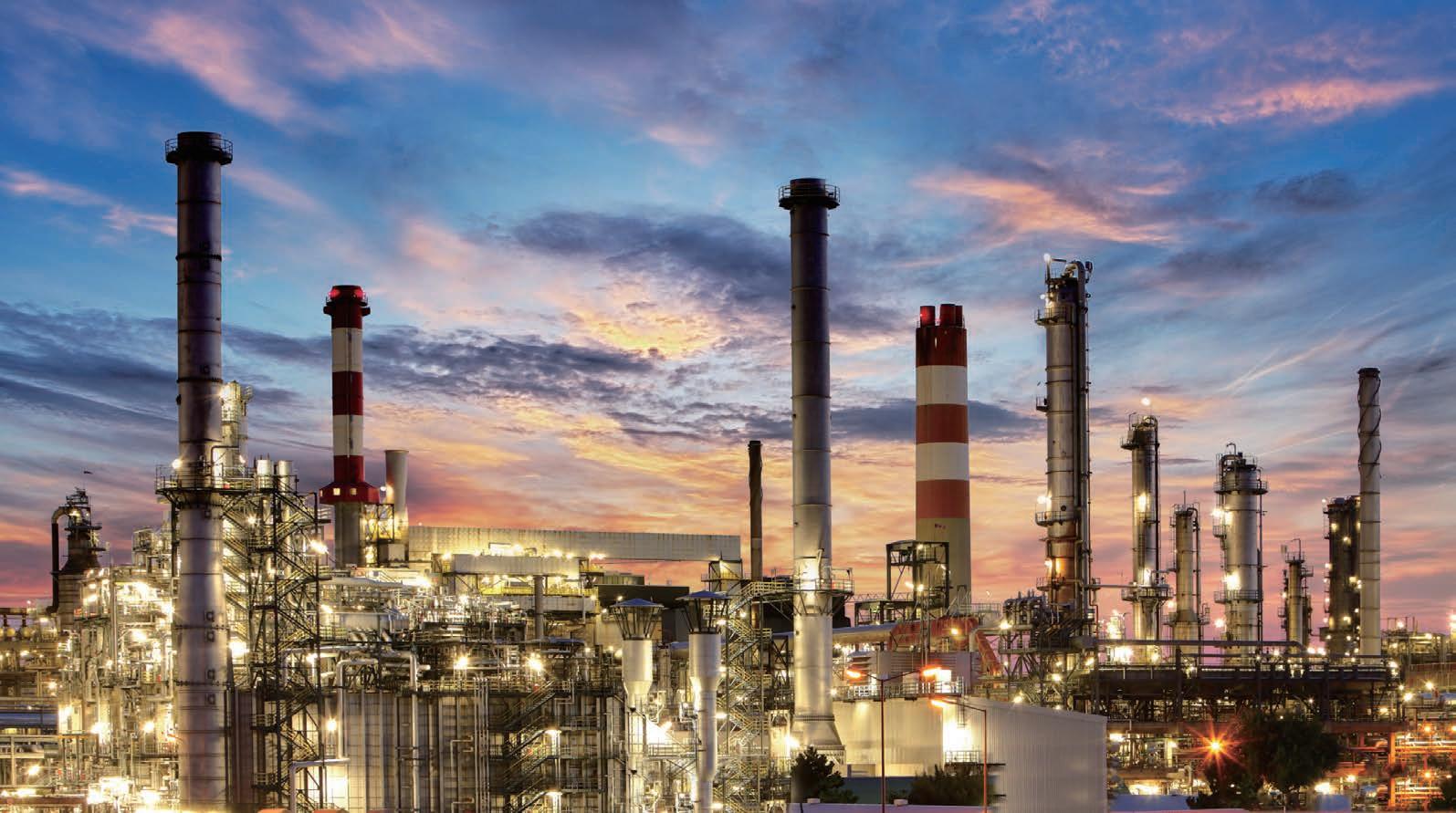





Number 11, NOVEMBER 2019 IEM Registered on 1 May 1959
MAJLIS BAGI SESI 2019/2020 (IEM COUNCIL SESSION 2019/2020)
YANG DIPERTUA / PRESIDENT
Ir. David Lai Kong Phooi
TIMBALAN YANG DIPERTUA / DEPUTY PRESIDENT
Ir. Ong Ching Loon
NAIB YANG DIPERTUA / VICE PRESIDENTS
Ir. Prof. Dr Norlida bt Buniyamin, Ir. Prof. Dr Jeffrey Chiang Choong Luin, Ir. Ellias bin Saidin, Y.Bhg. First Admiral Dato’ Ir. Ahmad Murad bin Omar, Ir. Dr Tan Chee Fai, Ir. Hj. Mohd
Aman bin Hj. Idris, Ir. Dr Wang Hong Kok
SETIAUSAHA KEHORMAT / HONORARY SECRETARY
Ir. Mohd Khir bin Muhammad
BENDAHARI KEHORMAT / HONORARY TREASURER
Ir. Chen Harn Shean
BEKAS YANG DIPERTUA TERAKHIR / IMMEDIATE PAST PRESIDENT
Ir. Dr Tan Yean Chin
BEKAS YANG DIPERTUA / PAST PRESIDENTS
Y.Bhg. Academician Tan Sri Datuk Ir. (Dr) Hj. Ahmad Zaidee bin Laidin, Y.Bhg. Dato’ Ir. Dr
Gue See Sew, Y.Bhg. Datuk Paduka Ir. (Dr) Hj. Keizrul bin Abdullah, Y.Bhg. Academician Tan Sri Dato’ Ir. Emeritus Prof. Dr Chuah Hean Teik, Ir. Choo Kok Beng, Y.Bhg. Dato’ Ir. Lim Chow Hock
WAKIL AWAM / CIVIL REPRESENTATIVE
Ir. Dr Lee Yun Fook
WAKIL MEKANIKAL / MECHANICAL REPRESENTATIVE
Ir. Fam Yew Hin
WAKIL ELEKTRIK / ELECTRICAL REPRESENTATIVE
Ir. Lim Kim Ten
WAKIL STRUKTUR / STRUCTURAL REPRESENTATIVE
Ir. Dr Ng Soon Ching
WAKIL KIMIA / CHEMICAL REPRESENTATIVE
Ir. Prof. Dr Lee Tin Sin
WAKIL LAIN-LAIN DISPLIN / REPRESENTATIVE TO OTHER DISCIPLINES
Ir. Dr Bhuvendhraa Rudrusamy
WAKIL MULTIMEDIA DAN ICT / ICT AND MULTIMEDIA REPRESENTATIVE
Ir. Dr David Chuah Joon Huang
WAKIL JURUTERA WANITA / WOMAN ENGINEERS REPRESENTATIVE
Ir. Rusnida bt Talib
AHLI MAJLIS / COUNCIL MEMBERS
Ir. Dr Leong Wai Yie, Ir. Razmahwata Mohd Razalli, Ir. Abdul Razak Yakob, Ir. Yau Chau Fong, Y.Bhg. Dato’ Ir. Foong Choy Chye, Y.Bhg. Dato’ Ir. Kisai bin Rahmat, Y.Bhg. Dato’ Ir. Nor Hisham Mohd Ghazali, Ir. Toh Chin Kok, Ir. Dr Jeyanthi Ramasamy, Ir. Yim Hon Wa, Ir. Yam Teong Sian, Y.Bhg. Dato’ Ir. Fakharazi bin Wahijan, Ir. Yasotha Ramachandran Chetty, Ir. Mohmad Asari bin Daud, Ir. Ng Beng Hooi, Ir. Dr Lai Khin Wee, Ir. Prof. Dr Ruslan bin Hassan, Ir. Mah Siew Kien, Y.Bhg. Dato’ Ir. Mohd Azmi bin Ismail, Ir. Ng Yong Kong, Ir. Dr Mui Kai Yin, Y.Bhg. Dato’ Ir. Noor Azmi bin Jaafar, Ir. Ting Chek Choon, Ir. Sukhairul Nizam bin Abd Razak, Ir. Lai Sze Ching, Y.Bhg. Dato’ Ir. Dr Ahmad Anuar bin Othman, Y.Bhg. Dato’ Ir. (Dr) Andy Seo Kian Haw, Y.Bhg. Dato’ Seri Ir. Dr Zaini bin Ujang, Ir. Omar bin Mat Piah
WAKIL BAHAGIAN JURUTERA SISWAZAH / YOUNG ENGINEERS SECTION
REPRESENTATIVES
Dr Yew Weng Kean, Mr. Kuugan Thangarajoo, Ms. Tiang Kor Lin, Mr. Tan Teck Ying, Mr. Lim Yiren
PENGERUSI CAWANGAN / BRANCH CHAIRMAN
1. Pulau Pinang: Ir. Yau Ann Nian
2. Selatan: Ir. Teo Ki Yuee
3. Perak: Ir. Simon Yeong Chin Chow
4. Kedah-Perlis: Ir. Haji Abdullah bin Othman
5. Negeri Sembilan: Ir. Dr Oh Seong Por
6. Kelantan: Ir. Abrizan bin Abdul Kadir
7. Terengganu: Ir. Abdullah Zawawi bin Haji Mohamad Noor
8. Melaka: Ir. Sreedaran a/l Raman
9. Sarawak: Ir. Haidel Heli
10. Sabah: Ir. James Yong Hon Min
11. Miri: Ir. Dr Lau Hieng Ho
12. Pahang: Y.Bhg. Dato’ Ir. Sharuddin bin Mohd Simin
AHLI JAWATANKUASA INFORMASI DAN PENERBITAN/ STANDING COMMITTEE ON INFORMATION AND PUBLICATIONS 2019/2020
Pengerusi/Chairman: Ir. Dr Wang Hong Kok
Naib Pengerusi/Vice Chairman: Ir. Dr David Chuah Joon Huang Setiausaha/Secretary: Ir. Lau Tai Onn
Ketua Pengarang/Chief Editor: Ir. Dr Wang Hong Kok Pengarang Bulletin/Bulletin Editor: Ir. Abdul Razak Yakob Pengarang Prinsipal Jurnal/Principal Journal Editor: Ir. Dr David Chuah Joon Huang Pengerusi Perpustakaan/Library Chairman: Ir. C.M.M. Aboobucker
Ahli-Ahli/Committee Members: Ir. Ong Guan Hock, Ir. Yee Thien Seng, Ir. Chin Mee Poon, Ir. Dr Oh Seong Por, Ms. Michelle Lau Chui Chui, Ir. Prof. Dr Abdul Aziz bin Abdul Samad, Ir. Razmahwata bin Mohd Razalli, Y.Bhg. Dato’ Ir. Nor Hisham Mohd Ghazali, Ir. Yasotha Ramachandran Chetty, Dr Sudharshan N. Raman, Ir. Dr Bhuvendhraa Rudrusamy, Ir. Hasril bin Hasini
LEMBAGA PENGARANG/EDITORIAL BOARD 2019/2020
Ketua Pengarang/Chief Editor: Ir. Dr Wang Hong Kok Pengarang Bulletin/Bulletin Editor: Ir. Abdul Razak Yakob Pengarang Prinsipal Jurnal/Principal Journal Editor: Ir. Dr David Chuah Joon Huang Ahli-ahli/Committee Members: Ir. Lau Tai Onn, Ir. Ong Guan Hock, Ir. Yee Thien Seng, Ms. Michelle Lau Chui Chui, Ir. Dr Oh Seong Por, Ir. Yasotha Ramachandran Chetty, Dr Sudharshan N. Raman, Ir. Dr Bhuvendhraa Rudrusamy, Ir. Razmahwata bin Mohd Razalli, Ir. Hasril bin Hasini
Secretariat: Janet Lim, May Lee
THE INSTITUTION OF ENGINEERS, MALAYSIA Bangunan Ingenieur, Lots 60 & 62, Jalan 52/4, P.O. Box 223, (Jalan Sultan), 46720 Petaling Jaya, Selangor Darul Ehsan. Tel: 603-7968 4001/4002 Fax: 603-7957 7678 E-mail: sec@iem.org.my Homepage: http://www.myiem.org.my

5
6 - 11
COVER STORY
Bridging Workforce Skill Gaps in Oil & Gas Industry
13 - 34
FEATURE ARTICLES
Malaysian Offshore Construction Industry: Overview & Outlook .............................................13
Introduction to Floating, Production, Storage & Offloading Topside System and Its Design Development ............................................................20
Managing Major Accident Hazards Through SCE Management Process ....................................26
Five Stages of ‘Dating’ or Making a Memorandum of Understanding (MoU) Establishing Collaborations with the Oil & Gas Industry ...................................................33
ENGINEER’S LENS The Eiffel Tower of Medan 35
FORUM
IEM Signs MoU with Malaysian Oil & Gas Services Council .................................................37
Effect of Environmental Forces on Offshore Structure Decommissioning Operation ................38 METD Outreach Programme in Johor
ENGINEER’S ADVENTURES
Perito Moreno - Glacier Extraordinaire
PINK PAGE Professional Interview
Explore our full set of Professional and Integrated PUBLISHING MANAGEMENT SERVICES:
» Project Management
» Crea�ve Management
» Ad Space Management
» Mailing Management
» Print Management
• Annual Reports
• Booklets • Brochures
• Bun�ngs • Business Cards
• CD / DVD Replica�ons
• Calendars • Cards & Invita�ons
• Cer�ficates • Custom Prin�ngs
• Envelopes • Folders
• NCR Bill Books • Notepads
• Leaflets • Le�erheads
• Paper Bags • Posters
• S�ckers • Others






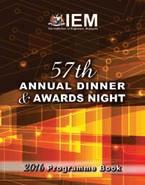





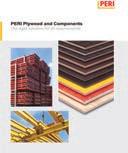






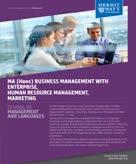




















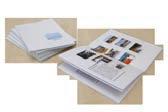
DIMENSION PUBLISHING SDN. BHD. (449732-T)
Level 18-01-02, PJX-HM Shah Tower, No. 16A, Persiaran Barat, 46050 Petaling Jaya, Selangor Darul Ehsan, Malaysia. Tel: +(603) 7493 1049 Fax: +(603) 7493 1047
E-mail: info@dimensionpublishing.com Website: www.dimensionpublishing.com
Chairman
ROBERT MEBRUER
CEO/Publisher
PATRICK LEUNG
SHIRLEY THAM shirley@dimensionpublishing.com
JOSEPH HOW joseph@dimensionpublishing.com
TAN BEE HONG bee@dimensionpublishing.com
PUTRI ZANINA & LAURA LEE putri@dimensionpublishing.com laura@dimensionpublishing.com
SUMATHI MANOKARAN sumathi@dimensionpublishing.com
NABEELA AHMAD beela@dimensionpublishing.com
THAM CHOON KIT ckit@dimensionpublishing.com
YEN YIN yenyin@dimensionpublishing.com
For advertisement placements and subscriptions, please contact: DIMENSION PUBLISHING SDN. BHD. (449732-T)
Level 18-01-02, PJX-HM Shah Tower, No.16A, Persiaran Barat, 46050 Petaling Jaya, Selangor Darul Ehsan, Malaysia. Tel: +(603) 7493 1049 Fax: +(603) 7493 1047
E-mail: info@dimensionpublishing.com
Subscription Department E-mail: info@dimensionpublishing.com
Printed by
PERCETAKAN SKYLINE SDN. BHD. (135134-V) No. 35 - 37, Jalan 12/32B, TSI Business Industrial Park, Off Jalan Kepong, 52100 Kuala Lumpur. Mailer
SM UNIQUE MAILING SERVICES SDN. BHD. (44277-W) 80, Jalan Nadchatiram Satu, Taman Taynton View, Cheras, 56000 Kuala Lumpur, Malaysia. Tel: +(603) 9132 9192
JURUTERA MONTHLY CIRCULATION: 22,500 COPIES
Submission or placement of articles in JURUTERA could be made to the:Chief Editor THE INSTITUTION OF ENGINEERS, MALAYSIA (IEM) Bangunan Ingenieur, Lots 60 & 62, Jalan 52/4, P.O. Box 223 (Jalan Sultan), 46720 Petaling Jaya, Selangor. Tel: +(603) 7968 4001/4002 Fax: +(603) 7957 7678 E-mail: pub@iem.org.my or sec@iem.org.my IEM Website: http://www.myiem.org.my
© 2019, The Institution of Engineers, Malaysia (IEM) and Dimension Publishing Sdn. Bhd.
PUBLICATION DISCLAIMER
The publication has been compiled by both IEM and Dimension with great care and they disclaim any duty to investigate any products, process, services, designs and the like which may be described in this publication. The appearance of any information in this publication does not necessarily constitute endorsement by IEM and Dimension. There is no guarantee that the information in this publication is free from errors. IEM and Dimension do not necessarily agree with the statement or the opinion expresssed in this publication.
COPYRIGHT
JURUTERA Bulletin of IEM is the official magazine of The Institution of Engineers, Malaysia (IEM) and is published by Dimension Publishing Sdn. Bhd. The Institution and the Publisher retain the copyright over all materials published in the magazine.
No part of this magazine may be reproduced and transmitted in any form or stored in any retrieval system of any nature without the prior written permission of IEM and the Publisher.

by Ir. Roznan Abdul Rashid Chairman, Oil, Gas and Mining Technical Division
skilled workforce is crucial in the oil and gas industry throughout the asset life-cycle, from the identification and feasibility study, planning and design, construction and commissioning, operation and maintenance to the decommissioning of the asset.
Many engineers, technicians and skilled workers from different disciplines and skills are required within the asset life-cycle activities.
Levels of skill and experience may also vary to fulfill the requirements due to technology disruption, demography of the working area, regulations imposed by the authorities and codes and standards such as ASME and API, shifting business models and changes in the economy.
Collaboration between the industry, institutions of higher learning, professional bodies, training centres and regulators may result in a holistic approach to address skill gap issues in the country.
Among things which can reduce the skill gap are identifying skill gaps early, creating a learning culture among workers, promoting continuous learning, sharing of knowledge and continuous improvement.
In this issue, Dato’ Raiha Azni Abd Rahman, Senior Vice President, Group Human Resource Management of PETRONAS and Ts. Sharifah Zaida Nurlisha Syed Ibrahim, President of MOGSC, elaborate further on strategies to address workforce skill gaps in oil and gas industry.
by Ir. Razak Yakob Bulletin Editor
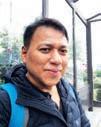
The OGMTD has been championing JURUTERA for the past 11 consecutive years. Congratulations and thank you for the support. We hope others will be as enthusiastic in supporting our very own magazine, JURUTERA!
The skill gaps issue occurs in all industries and is very critical in oil and gas particularly because the ups and downs of oil prices means ups and downs of resources able to hold their jobs. It is true that compensation is high but when the money is big, the stakes are high. Choose battles that you can win and know when and where to diversify into. This is also the reason you’d want to continue reading JURUTERA! CAFEO 37 in Jakarta has just ended. You read about this in the President’s Corner last month. Look at the Malaysia Pavilion in collaboration with MATRADE and you’d be proud to be Malaysian. Let’s take the opportunity to spread our horizons with IEM-MATRADE at CAFEO 38 in Da Nang, Vietnam, to be held tentatively on 24-27 November 2020. Mark your calendar now.
We welcome any feedback you have on JURUTERA and IEM in general. Let’s continue to engineer our country to greater heights!

WHuman resource capability building has become more crucial and urgent in light of new technologies with the advent of the Fourth Industrial Revolution (4IR), which also affects the oil & gas industry. JURUTERA finds out from two top industry players what it takes to meet the challenges of human capital development in this new era.
ith technology advancement, the way forward for industries is to embrace technological change so as to reshape operating landscape and reap the benefits of improved productivity, higher efficiency and costsavings. It is no exception for the oil and gas (O&G) industry, which is progressing towards digital maturity.
In order to be future-ready with the arrival of 4IR, which is driven by new technologies, including Artificial Intelligence, big data, blockchain and the Internet of Things, companies are taking a transformational journey by re-assessing and redeveloping human capital with a focus on shifting mindset and preparing staff members to adopt new ways of working.
In Malaysia’s O&G industry, the moves by two major organisations have an impact on the entire industry. These are national oil company Petroliam Nasional Berhad (PETRONAS) and The Malaysian Oil & Gas Services Council (MOGSC) which has a membership of more than 500 companies, representing all sectors within the industry.
PETRONAS is vested with the entire O&G resources in Malaysia and is entrusted with the responsibility of developing and adding value to these resources. Since its incorporation in 1974, it has grown to become an international O&G company. Today, its operations are in
over 50 countries with a global workforce of 48,000 employees. It is ranked among Fortune Global 500’s largest corporations in the world.
Employees are a company’s biggest asset. For PETRONAS, people are the heart of its business, and human capital management has always played an imperative role in supporting its business strategies. The alignment between business and human capital strategies is among the reasons behind the resilience that PETRONAS has built in the past 45 years.
In preparing for the future, its Senior Vice President, Group Human Resource Management, Dato’ Raiha Azni Abd Rahman, says PETRONAS has embarked on a three-pronged strategy that will focus on growth.
“Firstly, we will maximise our cash generators and make sure all our assets work smoothly and efficiently with optimum manpower. It is important for us to sweat our assets and maximise production to secure strong and stable cash flow, providing solid foundation for growth,” she says.
“Secondly, we want to expand our core business and grow our integrated business model. We have huge investments in the Atlantic Basin, especially Mexico and Brazil, and we will focus on unconventional projects in Canada, not forgetting our mega RAPID Project in Pengerang, Johor, which will increase our downstream volumes and extend our product range.
“Thirdly, we have stepped out and built capabilities in new businesses to improve our future readiness and to capitalise on global trends. We have acquired a Singapore-based solar energy company, Amplus Energy Solutions Pte. Ltd., that specialises in rooftop and ground-based solar power projects. Recently, we also acquired a Dutch specialty chemicals company, Da Vinci Group, based in the Netherlands and made our foray into specialty silicone.”
PETRONAS’ Global Talent Strategy highlights its commitment to building the right leader, right talent and right environment, and is aimed at
establishing a sustainable talent pipeline for long-term success, as well as creating a conducive ecosystem for employees to thrive.
That said, PETRONAS’ robust and fit-for-purpose human capital development is the key behind the successes that the company has achieved to date. Over the years, PETRONAS has invested billions of ringgit in education and human capital development to ensure sustainable talent pipeline not only for the company, but for the O&G industry as a whole.
“We have continuously focused on and invested in development of our people and human capital development for the industry since PETRONAS was formed. This will continue to be our focus for years to come,” says Dato’ Raiha, adding that this year, PETRONAS is commemorating its 45th anniversary.
With PETRONAS’ foray into new areas and new businesses and, with the disruption of established ways by new technologies and digitalisation affecting all industry players, the preparation of the O&G manpower to meet new and future demands has become more urgent and crucial.
Since 1975, PETRONAS has been sponsoring students for tertiary education under the PETRONAS Education Sponsorship Programme (PESP). Every year, it sponsors up to 400 students to pursue tertiary studies in various fields including chemical, petroleum and mechanical engineering, law and other industryrelated courses at top universities around the world (such as Australia, Canada, New Zealand, United Kingdom, United States of America, China and Japan) and at Universiti Teknologi PETRONAS (UTP).
It has invested over RM3.3 billion for PESP since its inception and this has benefited more than 36,800 students. At the same time, this provides high quality graduates for PETRONAS, the industry and the nation.
Since its formation in 1997, UTP has produced graduates to fill gaps and to meet the industry’s human capital

requirements. In addition to producing graduates with leadership qualities and communication abilities, UTP offers a wide range of industry-relevant engineering, science and technology programmes at undergraduate and postgraduate levels. More than 15,000 students have graduated from UTP and many have benefitted from sponsorships given by PETRONAS.
“While we continue to sponsor students, we have noticed a decline in interest in science, technology, engineering and mathematics (STEM). This requires continuous enhancement and implementation of policies, strategies, frameworks and programmes to bring together parents, educators, students, the private sector and policy makers towards advancing equitable and inclusive STEM education for all Malaysians. If students are not interested in STEM, it reflects on the state of progress of this country,” she says, adding that UTP used to have 1,400 STEM students but the number had declined to about 1,200.
Concurring with Dato’ Raiha on the declining interest in STEM subjects among students, MOGSC President Ts. Sharifah Zaida Nurlisha Syed Ibrahim says STEM has also evolved to STEAM and STREAM.
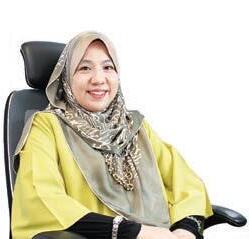
STEAM incorporates all the elements of STEM, but adds art to the mix, while STREAM adds “reading” as an additional layer to STEM and STEAM.
The evolution of STEM is based on the opinion that literacy is also an important component for students to develop critical thinking and creativity.
Ts. Sharifah says: “Both critical thinking and creativity are skill sets required for many jobs, including in the engineering sector. Engineers also need to have analytical ability, such as to analyse big data, a task that cannot be taken over by robots.
“In O&G, the development of skills required to fill the gaps in industry requirements is still on-going. Besides supporting efforts to increase awareness among the young of the importance of STEM education, MOGSC also supports human resource competency building through Technical & Vocational Education and Training (TVET), which is aimed at equipping the young with technical skills required by industries.
“We are also aware that in 5-10 years, school leavers and graduates will have to be re-skilled as what they learn today may be irrelevant. The new ways of doing things involve innovation, AI, data analytics and robotics. Normal routine jobs will be taken over by AI and robots. In fact, it is already happening in PETRONAS.”
As such, Ts. Sharifah says MOGSC is collaborating with PETRONAS to produce marketable graduates. “Those in the industry must work
closely with universities to produce modules that meet present and future demands of the industry. For instance, we need more people who are able to analyse data and make the right decisions.”
Ts. Sharifah agrees with Dato’ Raiha that it’s important for employees to be agile and to have the flexibility to grasp new knowledge as well as to move from one field to another.
“As the world changes, with the onset of more new technologies, we expect re-skilling of employees to be an on-going process. The full scale of new skills required in the future still remains a big question mark but we must be prepared to adapt and change. What we must do is to prepare for the future and leave the O&G industry in good shape for future generations,” says Ts. Sharifah.
PETRONAS supports the nation’s human capital development through its Corporate Social Responsibility (CSR) initiative called Vocational Institution Sponsorship & Training Assistance (VISTA).
“Through VISTA, we work with more than 20 polytechnics to provide technical training in order to produce skilled workforce for the O&G industry,” says Dato’ Raiha.
She says VISTA was implemented in 1992 with the initial aim of supporting peninsula gas utilisation development which has become a significant initiative for PETRONAS and the country.
Through collaborations with selected institutions under Federal and State Government agencies, VISTA provides training facilities in technical programmes such as welding, gas pipe fitting, building maintenance and instrumentation.
Dato’ Raiha says: “In PETRONAS, we invest heavily in human capital, both within PETRONAS and beyond PETRONAS (O&G industry development in the country). We sponsor machineries used for training and train lecturers and instructors in the relevant skills which they can impart to students. We have provided
machineries to technical institution so that the industry can benefit from it.”
PETRONAS contributes through VISTA in many ways, including giving technical advisory, purchase of training equipment and consumables, arrangement for training equipment maintenance, design of training modules for trainers and students as well as providing competency assessment and certification for the students. She says VISTA will continue to be implemented to ensure a continuous supply of technical resources in O&G industry.
In pushing ahead with technical capability building initiatives, Dato’ Raiha says PETRONAS has also set up Institut Teknologi Petroleum PETRONAS (INSTEP), a technical training institute. In the last 38 years since it was formed in 1981, INSTEP has helped to accelerate human capital development to support the growth of both PETRONAS and the O&G industry.
INSTEP modules now include the integrated Upstream Downstream Training Plant (UDTP), the first of its kind in the world. It simulates real plant scenarios to enhance the competency of learners through hands-on training and experiential learning for safe, efficient and responsible exploitation of resources.
One of the strengths of INSTEP is the customisation of programmes according to the needs of customers and the industry. These include the flagship Petroleum Technology Programme-1, which is accredited by the UK-based Business and Technology Education Council (BTEC), and the Offshore Petroleum Industry Training Organisation (OPITO), making Instep graduates globally marketable. The instructors are also BTEC-certified assessors and verifiers, which strengthen Instep’s bridging, professional development and competency-based assessment and certification programmes.
PETRONAS also focuses on leadership development for employees at all levels. To nurture the right leader, PETRONAS has adopted a model that

Sika offers a diverse range of services and state-of-the-art technological solutions to leading companies operating in the Oil & Gas Industry. Our focus remains on technological advancements in the fields of roofing, flooring, tank lining, sealing & bonding, machinery grouting, concrete repair, pipes protection with strengthening and marine repair and protection.
focuses on Passion, Performance and People-Centric form of leadership. It sets the standard for its most valuable assets and defines the company’s expectations of how a leader should behave and what qualities are required to deliver results. It also sets the tone for the business and defines culture from the top.
To support the development of leaders, the company has wellstructured leadership development programmes, implemented through the PETRONAS Leadership Centre (PLC), which started as an internal training department in 1979. Since then, it has produced many leaders in the company and is now a “corporate university” for leadership development in the company.
To complement these development programmes, the PETRONAS’ Top Talent Development Framework (TTDF) has been established to steer the build-up of global leaders to drive business agility and growth through breakthrough performances. The framework clusters and develop top talents in depth and breadth of both functional and leadership dimensions. TTDF, a framework that includes talent identification, talent review and succession planning, has proved to be effective and has yielded many leaders across the company.
The capability building initiatives of PETRONAS also extend to its vendors and suppliers as well as manufacturers, which form an important chain that strongly binds the O&G industry. PETRONAS frequently reaches out to them through MOGSC.
“We continue to conduct training and competency development programmes and to work with our vendors to hold such programmes in collaboration with the Ministry of Human Resources so that the costs of organising such programmes can be claimed under the Ministry’s Human Resources Development Fund (HRDF). We make sure our vendors and other industry players subscribe to the fund and so can benefit from HRDF
claimable training programmes,” says Dato’ Raiha.
According to Ts. Sharifah, the competency and training programmes for O&G are mobilised by the working group (WG) for this industry, which is one many WGs within MOGSC.
“Each WG looks at specific issues, and run various activities throughout the year. We work closely with PETRONAS, including issuing the PETRONAS Activity Outlook report, which helps our members to know what to focus on and to tap opportunities presented by PETRONAS. Our members also have access to the PETRONAS website where they can look for specific information,” says Ts. Sharifah.
“Project Shine was commissioned in 2016 to strengthen the O&G Services & Equipment (OGSE) sector via 4 core reforms and 10 enabler initiatives. Human capital is part of the overall initiative with the objective to enable human capital development, i.e. to ensure sufficient, competent local workforce for the industry. The Malaysian OGSE Talent Landscape Study shows there are insufficient local talents to support increased PETRONAS activities in drilling and plant turnaround segments. Under this project, we envision for the industry to be more prepared for talent demand in the future,” says Dato’ Raiha.
Ts. Sharifah says MOSGC also serves as the linkage between the industry players, stakeholders and the Government to put together the framework for meeting industrial skills required for the O&G industry. Views, feedback and experiences of the various parties are exchanged during events and activities such as dialogues, conferences, workshops, site visits, business matching events and social engagements.
Engagements and collaborations between MOGSC and PETRONAS as well as O&G operators, government agencies, industry associations such as IEM, academic institutions and others are continuous. In the area
of human capital development, Ts. Sharifah says MOGSC works closely with the Ministry of Human Resources and has benefited from the HRDF scheme by holding various training programmes. In terms of protecting the safety and health of industry workers, MOGSC collaborates with the National Institute of Occupational Safety and Health (NIOSH), which is also under the Ministry.
During oil price downturns, some talents are released from the market as businesses suffer financial drawbacks. Recognising this, Ts. Sharifah says MOGSC allows individual memberships so that the industry does not lose the talents and their expertise entirely.
She adds: “Though we can still tap their expert areas, it can be difficult for them to take a pay cut when times are bad. They may leave the industry but we keep in touch with them and keep them posted on vacancies available so that they may return to the industry. They may also be engaged as assessors and experts in specific fields. Another route they can take is to become professional engineers. What is important is for us to lay open the various opportunities, keep communication open and do our best to attract capable talents who have left the industry to return. We must be able to remunerate them well and to recognise the professionals through proper accreditations.”
The most critical categories in O&G where there is a lack of qualified talents are in turnaround management and large-scale integration of maintenance services. These include ensuring specific tasks to be executed within a specified time, carrying riskbased inspection and anticipating breakdowns instead of mitigating problems, controlling turnaround time and minimising shutdowns that can have critical impact on business bottom-line.
These are crucial services, particularly in large plants such as the Rapid Pengerang Integrated Petrochemical Complex which
houses oil refineries, petrochemical plants, liquefied natural gas terminals and a regasification plant, among other facilities.
“The Pengerang Project is about to be commissioned. Here many plants will require maintenance and turnaround services. Such services are also required at offshore facilities in Terengganu, Sabah and Sarawak. There are abundant opportunities for local players to support jobs available in the various PETRONAS facilities,” says Dato’ Raiha.
Commissioning activities require specific expertise which is still quite lacking in the country’s O&G industry. These activities include ensuring installations according to plans, overseeing proper check and calibration of all required equipment and interfacing all operational systems. Personnel engaged in commissioning activities must be suitably qualified and experienced for the level of responsibility and importance to safety of their work.
Expertise and knowledge in relevant technologies are also lacking in de-commissioning activities, which include project management, engineering and planning, regulatory compliance, and platform preparation and site clearance.
Ts. Sharifah says the landscape for training will also change tremendously. “In fact virtual reality training is already taking place today. For example, technical training on equipment usage can be conducted without having real equipment. The training can be conducted virtually, such as through cloud computing. All virtual training can be turned into mixed reality and as long as we have Internet connection, training can be done from anywhere,” she says.
In addressing regional market competitiveness in providing services, Ts. Sharifah says MOGSC understands the need to export and sell Malaysia’s competency to regional markets. One such effort is collaborating with foreign embassies to identify
the expertise needed in different markets.
“We are also developing the export mindset among our members and setting up the infrastructure to ease the penetration of local companies into overseas markets. We also tag along with PETRONAS in countries that it has made forays into,” says Ts. Sharifah.
Dato’ Raiha says recent efforts to enhance and build new capabilities among its employees include emphasis on developing key values and behaviours which are in line with the values upheld by PETRONAS.
“We prioritise on certain behaviours for our employees to embrace. We want them to be creative, innovative, adaptable, agile and value-driven, as well as to persevere under whatever circumstances and to collaborate as a team. However, our values must be strong. Our shared values of loyalty, integrity, professionalism and cohesiveness are and remain the cornerstone of how we do business,” stresses Dato’ Raiha, adding that PETRONAS is also creating a digital mindset among its employees by encouraging them to push boundaries, challenge status quo, be agile and be unafraid of change and to work as one team with the power of collaboration.
She singles out agility as one of the most important behaviours that an employee must have in dealing with change. She says: “While technology development creates new jobs, it can also displace existing ones. But if people are agile and willing to learn, unlearn and relearn, there will be always be opportunities for them.”
4IR and job mismatch pose a real challenge for the O&G industry. Manpower skill gap still exists as the skill sets of job applicant fall short of industry expectations.
Both PETRONAS and MOGSC have moved in the right direction
through their own initiatives and collaborations with various parties to address the challenge. As the key movers and shakers of the industry that are in tune with its current and future landscape, the competition and rapid technology advancement, they are at the forefront of developing capabilities of existing workforce by up-skilling, re-skilling, creating avenues for continuous learning and changing employee mindset, as well as developing new recruitment channels and tapping into different labour pools.
However, other industry players must also do their part. They must be prepared to make the necessary capital investment to meet their current and future manpower requirements.
In addition, the Malaysia must address the challenge of nonemployability of the country’s educated labour due to skills mismatch. With the declining interest in STEM subjects, the problem is compounded for industries like the O&G that require specific STEMrelated skill training.
Given that 4IR requires high level of skills, declining interest in STEM in secondary and tertiary education is something that Malaysia must improve upon. It is important for the labour force to have basic skills, such as equipment operation and trouble shooting, to be able to adapt and learn new skills.
While the industry is moving in the right direction, the efforts at the national education level to bridge the academic-industry skill gap remain inadequate. The core qualification and skills imparted in the current technical and vocational education will still remain important and will have to be updated with the evolution of industry technology. In addition, current engineers and future graduates must have an open mind and be prepared to take up re-skilling and up-skilling opportunities to stay relevant, become more marketable and contribute towards industry advancement.









Through its major contractors, Malaysia has completed the construction of many oil and gas facilities, which include substructures, inter-platform bridges, booms, wellhead topside platform, central processing platforms, compression platforms, living quarters, process skids and modular compression skids.
There are five major constructors, often referred to as fabricators: Sapura Energy Fabrication Yard (SEFY), Malaysian Marine Heavy Engineering (MMHE), TH Heavy Engineering (THHE) and Brooke Dockyard and Engineering (BDE).
These are first-tier, local based, major construction contractors which have obtained the licence to operate by PETRONAS (MOCA, 1990). Over the years, they have fabricated multiple local and international projects. Some notable oil and gas construction projects in terms of size
and technology are Kikeh Truss Spar, Gumusut Kakap SemiSubmersible Floating Production System, Tapis Enhanced Oil Recovery Unit and Malikai Tension Leg Platform.
KIKEH TRUSS SPAR
Kikeh field, located 110km off Sabah with a water depth of 134m, is the first deepwater production and first Spar constructed in Malaysia. Kikeh Spar is also the first unit installed outside the Gulf of Mexico. Murphy Sabah Oil Company awarded Technip full engineering, procurement, construction, installation and commissioning (EPIC) contract and MMHE was responsible for the construction. The truss spar or Dry Tree Unit (DTU) is 142m long and 32m in diameter.
Although not a huge spar when compared to those in the Gulf of Mexico, Kikeh Spar is probably one of the largest
from a standpoint of well count, having 24 well slots. The spar will incorporate a tender assisted drilling rig to drill and complete the Kikeh wells. In 2007, MMHE successfully completed Malaysia’s first deepwater facility construction. As it was also the biggest deepwater facility ever built in the country at that time, this was an important milestone in our oil and gas construction history (Dechant & McFadyen, 2008; Webb, Selamat, Omar, Desormeaux, & Moran, 2008).
Gumusut Kakap is the first deepwater semi-submersible Floating Production System (FPS) in Malaysia. Located 120km off the Sabah coast, Gumusut Kakap field comprises 19 subsea wells, with oil exported to an oil and gas terminal in Kimanis, via a 200km-long pipeline. Water depth in the region is about 1,200m. The project had its first production in October 2014.
Gumusut Kakap, Asia’s largest offshore deepwater facility, was constructed by MMHE. Viewed from above, it covers an area the size of 1.5 soccer fields. It was built with 676km of stainless steel tubes, enough to run the distance from the north of Peninsular Malaysia to the southern tip.
The construction team achieved the world’s largest and heaviest onshore lift award for this project. The 23,000-tonne Gumusut Kakap topside was lifted onto the hull, marking a significant milestone in our oil and gas construction industry. (Shell, 2014; Technology, 2014).
The Gumusut Kakap Semi-Sub FPS, the largest such facility in the world that was fully built and integrated on land, left the MMHE yard in Pasir Gudang in May 2013. This is also the biggest structure ever undertaken by MMHE and was successfully constructed utilising approximately 40 million man-hours and the direct involvement of approximately 5,000 personnel {Today, 2013 #266}.
TAPIS ENHANCED OIL RECOVERY
Enhanced Oil Recovery (EOR) is the extraction of crude oil from an oil field which cannot be extracted using techniques such as thermal, gas injection and chemical injection (DOE, 2018). Tapis is one of the largest oil fields in the Malay Basin and has been in the production for 40 years, since 1978. It is also one of the oldest fields in Malaysia.
Tapis EOR project is the first large scale EOR project in South East Asia. (Selamat, Teletzke, Patel, Darman, & Shuhaimi, 2008). ExxonMobil Exploration and Production Malaysia Incorporated (EMEPMI) co-owns the field with PETRONAS Carigali. The EOR technology using Water Alternating Gas (WAG) injection was designed to improve production with an estimate of over 180 million barrels oil reserve for at least another 25 years (Malaysia, 2017; Selamat et al., 2008). Tapis EOR is fully designed and constructed by local contractors. The construction of the CPP was successfully completed by MMHE in 2014 (Malaysia, 2017). The construction of the jacket was carried out by Sapure Energy Fabrication Yard. The 5,500-tonne
jacket being the substructure for the main central processing facility of the EOR project is the heaviest jacket installed in Malaysia. The main component of the project is the Tapis R central processing platform which comprised a large integrated deck structure with living quarters for 145 personnel and is equipped with 11 million cubic m (390 million cubic feet) per day (MMcf/d) gas compression and 270,000 barrels per day water injection facilities, productionprocessing equipment, and utilities systems. Tapis R is also the first platform installed by ExxonMobil Exploration and Production Malaysia Inc. using the float-over method for its topsides.
Malikai field is located about 100km off Sabah in water depths of about 500m. It is Shell’s second deepwater project in Malaysia, after Gumusut-Kakap in 2014. Malikai TLP platform is the first TLP in Malaysia. Malikai TLP is also Shell’s first TLP designed and fabricated outside the Gulf of Mexico. It is regarded as Shell’s first TLP to be coupled with a Tender Assisted Drilling (TAD) rig, as opposed to using a permanent dedicated rig, which allows cost savings.
The TLP is moored to the seabed 500m underwater by a group of tethers or tendons at each corner, which are held upright in tension. The 27,500-tonne TLP comprises a 13,800-tonne topside and a 13,700-tonne hull. The topside houses production decks, with a capacity of 24 well slots, and living quarters. The TLP is wholly designed and fabricated in Malaysia, via a joint-venture between Technip and Malaysia Marine and Heavy Engineering (MMHE). The project had a very innovative topside and hull integration method which used a Mega Jack and Skid System that lifted the topside 40m above ground and skidded it 90m horizontally to set it on the hull structure. It took seven days to complete. (Ab. Majid, Mohd. Nor, & M. Hanafi, 2016; Asia, 2017; Si, Lim, Wong, & Choo, 2016). This engineering marvel was also the proud winner of The Institution of Engineers Malaysia (IEM) Outstanding Engineering Achievement Award in 2017.
For major oil and gas construction projects in Malaysia from 2010, please refer to Table 1.
From the recent activity outlook released by Petronas, about 11 or 13 Wellhead Platforms (WHP) and 1 Central Processing Platforms (CPP) are expected to be developed (PETRONAS, 2017). To keep costs low, the majority of new WHP developments may opt for a lightweight structure with minimum facilities. PETRONAS is expecting to develop a~20,000 MT Mobile Offshore Production Unit (MOPU). Local construction companies Sapura Energy Fabrication Yard (SEFY) and Malaysia Marine and Heavy Engineering (MMHE) are the front-runners to secure more new fabrication contracts (Inani, 2018).
2010 MMHE Kikeh Truss Spar
2010 Sapura Energy West Belumut WHP – Jacket & Topside
2010 Brooke Shipyard SJQ-A Topsides
2011 Sapura Energy
2011 Sapura Energy
2012 Brooke Shipyard
2013 MMHE
PM329 East Piatu Development Project
Murphy Sabah Oil Company
Sapura (Formerly Newfield Malaysia)
Sabah Shell Petroleum Company
Sapura (Formerly Newfield Malaysia)
EPC Berantai Field Development Project – Topside & Jacket Petrofac Malaysia
Merapuh - A Production Topside for SK309/311 Phase II
Gumusut-Kakap Semi-Submersible Floating Production System (FPS)
2013 Sapura Energy
Patricia Satellite for SK309/311 Sarawak Development Project
2013 THHE LADR-A Topside Fabrication
2013 THHE D12DR Topside
2014 MMHE Tapis Enhanced Oil Recovery (EOR) Project
2014 THHE
Murphy Sarawak Oil Company Limited
Sabah Shell Petroleum Company
Murphy Sarawak Oil Co. Ltd.
Sarawak Shell Bhd.
Sarawak Shell Bhd.
ExxonMobil Exploration & Production Malaysia
PM307 Bertam Field Development Project Lundin Malaysia B.V.
2015 MMHE SK316 Project

Offshore Sabah, East Malaysia
Offshore Peninsular Malaysia
Offshore Labuan Malaysia
Offshore Peninsular Malaysia
Offshore Peninsular Malaysia
Offshore Sarawak, Malaysia
Offshore Sabah, East Malaysia
Offshore Bintulu Sarawak
Offshore Sarawak, Malaysia
Offshore Sarawak, Malaysia
Offshore Terengganu, Malaysia
Offshore Peninsular Malaysia
PETRONAS Carigali Sdn. Bhd.




Nehemiah-OVM provides the following products and services:
- Post-tensioning solution provider
- Carpark Flat Slab
- Transfer Plate
- Beams, Box Girders
- Alternative design solutions
- Cable systems (stay cable, main cable, hanger)
- Bridge bearing and expansion joint
- Construction solutions (heavy lifting ILM etc)
- Monitoring, repairing and strengthening for structures





Head Office
Nehemiah Prestress Sdn Bhd 1140945-A
No. 45-3, Jalan PJU 5/20
Offshore Sarawak, Malaysia
The Strand, Kota Damansara 47810 Petaling Jaya
Selangor Darul Ehsan
Malaysia
Tel: (603) 6142 6638

2015 THHE
Kinabalu NonAssociated Gas (NAG) Development Project-PCC
2016 MMHE Malikai Tension Leg Platform (TLP)
PETRONAS Carigali Sdn. Bhd.
Sabah Shell Petroleum Company
Source: (Brooke, 2018, MHB, 2018, Sapura, 2018a, THHE, 2018)
Offshore Sabah, East Malaysia
Offshore Sabah, East Malaysia
Fax: (603) 6142 6693
Email: enquiry@nehemiahpt.com

Certified by the European Organization for Technical Approval


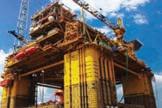


In 2018, Mubadala Petroleum sanctioned a RM1 billion-plus Pegaga gas development project in Block SK 320, off Sarawak. This is its first development in Malaysia. The project includes a central processing platform and a 130km subsea pipeline to Bintulu (OSEA, 2018). Offshore South East Asia (OSEA) also reported that another project was sanctioned in 2018, the early phase of Block SK408 offshore Sarawak, operated by Sapura Energy Berhad. The Gorek, Larak and Bakong fields will be developed with three wellhead platforms.
Malaysia has a total shore exploration area of 565,555 sq. km, of which one-third is in deepwater (Khalid, 2006). Our deepwater potential remains under-explored, and only 3 billion barrels of oil equivalent (boe) of deepwater resource have been proven over the years. There is a potential untapped discovery of 7 billion boe to be explored and discovered (BMI, 2016). The depletion of existing fields as hydrocarbon production also creates a sizable market opportunity which accelerates exploration in Malaysian deepwater (Islam, Jameel, & Jumaat, 2012).
PETRONAS has a long-standing goal to transform Malaysia into a regional deepwater hub (PETRONAS, 2013). However, deeper water usually means greater challenges, so better technology and work methods need to be employed (Khalid, 2006). According to OSEA (2018) a recent deepwater Rotan gas project offshore Sarawak was awarded in 2018. The Rotan deepwater project will be the feedstock gas source for Petronas’s second floating LNG vessel which is expected to start in 2020.
PETRONAS identified 5 fields in offshore Sabah and Sarawak as well as 9 in Peninsular Malaysia where EOR technology could be implemented (PETRONAS, 2013). In an interview in 2014, the Vice President added that about half the country’s producing fields have EOR potential (V.P. Petronas, 2014), with production from these fields to reach between
750 million and 1 billion bbls throughout the life of the field. As at 2016, there were 10 EOR projects in the process for development over the next 10 years (BMI, 2016). One significant project is PETRONAS’ Bokor phase three EOR development offshore Sarawak (OSEA, 2018).
Mahatma Gandhi once said: “The future depends on what you do today.”
This powerful message resonates well with oil and gas industry. Despite going through a tough two years, industry players have kept innovating and reinventing themselves with automation and digitalisation being the current focus.
On the local offshore construction landscape, PETRONAS remains confident and committed in harnessing and nurturing the capabilities and expertise of homegrown fabricators who have also taken up the challenge to achieve many success stories in showcasing the nation’s engineering capability. With this positive outlook, there are tonnes of opportunities available for greater engineering achievements in the Malaysian Offshore Construction Industry.
[1] Ab. Majid, M. A. B., Mohd. Nor, M. S. B., & M. Hanafi, H. B. (2016). Case Study - Hull Block Heavy Lifting Challenges for a Tension Leg Platform TLP. Paper presented at the Offshore Technology Conference Asia, Kuala Lumpur, Malaysia. https://doi.org/10.4043/26729-MS
[2] Asia, C. P. (2017). Malikai TLP Project. Retrieved from http://www. constructionplusasia.com/malikai-tlp-project/
[3] BMI, R. G. (2016). Malaysia Oil and Gas Report (1748-4103). Retrieved from London, UK:
[4] Brooke, D. (2018). Brooke Dockyard and Engineering Works Corporation Project Experience. Retrieved from http://www. brookedockyard.com
[5] Dechant, S., & McFadyen, M. K. (2008). Kikeh Development: Project Execution Model. Paper presented at the Offshore Technology Conference.
[6] DOE, D. o. E. (2018). Enhanced Oil Recovery. Retrieved from https:// www.energy.gov/fe/science-innovation/oil-gas-research/enhanced-oilrecovery
[7] Inani, R. (2018). Malaysia Oil & Gas
[8] Islam, A. S., Jameel, M., & Jumaat, M. Z. (2012). Oil and gas energy potential at Malaysian seabed and Spar platform for deepwater installation. International Journal of Green Energy, 9(2), 111-120.
[9] Khalid, N. (2006). Deepwater Ventures in Malaysia : Recent Developments, Prospects and Challenges. Paper presented at the Offshore Drilling & Deepwater / Underwater Technologies Offshore Drilling & Deepwater / Underwater Technologies Conference, Kuala Lumpur.
[10] Malaysia, C. (2017, 31st March 2017). Tapis EOR project will start production in 2014. Malaysian Reserve
[11] MHB. (2018). Overview of Past Fixed Platform Consruction.
[12] OET, O. E. T. (2014). Gas Flows from Kebabangan (Malaysia). Retrieved from https://www.offshoreenergytoday.com/gas-flows-fromkebabangan-malaysia/
[13] OSEA. (2018). Malaysian projects on radar for go-ahead. OSEA2018 Industry Insights
[14] PETRONAS. (2013). PETRONAS Exploration & Production Brief
[15] PETRONAS. (2017). PETRONAS Activity Outlook 2018-2020
[16] Petronas, V. P. (2014) EOR Projects/Interviewer: B. News
Author's Biodata
Ir. Davendren Vereya, has a degree in Mechanical Engineering and an MBA in Construction Management. He is Engineering Data Manager for SBM Offshore and a committee member of IEM’s Oil, Gas & Mining Technical Division.
IEM is currently recruiting a new batch of Arbitrators into the IEM panel of Arbitrators.
The qualifications are as follows:
a) has been a Corporate Member of IEM for at least 10 years; and
b) is legally trained with experience in arbitration - possesses a law degree and a Diploma in International Commercial Arbitration from Chartered Institute of Arbitrators (CIArb), UK; and
c) has at least 10 years’ working experience in construction, either as a consultant or as contractor.
Alternatively;
a) has been a Corporate member of IEM for at least 10 years; and
b) is currently empanelled as an arbitrator in Asian International Arbitration Centre (AIAC); and
c) has at least 10 years’ working experience in construction, either as a consultant or as contractor.
The application form can be downloaded from IEM Website at this link: http://www.myiem.org.my/news/newsdetails.aspx?id=549 and to be returned to:
Standing Committee of Professional Practice (Arbitration) The Institution of Engineers, Malaysia Bangunan Ingenieur, Lot 60/62, Jalan 52/4, 46720 Petaling Jaya,

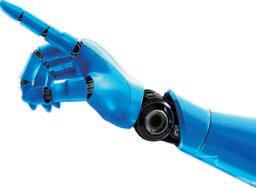









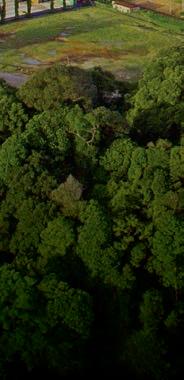


















































Ir. Mohammad Adnan Sujan
The oil and gas business sector in Malaysia has matured and deep water or sea oil & gas field exploration and developments stimulate the need to drive and grow the industry. Inspired to support this deep water development campaign, different types of processing facilities are explored – rigid, versatile and robust to the environment as well as different from the shallow jacket fixed type platform. Here, we will briefly touch on floating, production, storage & offloading (FPSO).
In principle, FPSO is a ship-shaped vessel commissioned to receive crude oil, process it on board and store it in tanks in the hull for offloading to tankers or to oil terminals via pipelines. There is also a cylindrical FPSO.
Here, we will focus on and discuss the vessel type FPSO. This can be a converted or newly-built tanker, depending on the requirements of the users. Its size is measured by its maximum vessel tank storage capability, barrels and sometimes, by its capability to process the hydrocarbon in barrels per day.
The FPSO system consists of the vessel, the process top sides module for oil and gas separation, stabilising processing and treatment system. The hull comprises storage tanks, turret mooring system, accommodation and office area, helideck and gas offset discharge system with flaring tower. In addition to its main operating features, it is also equipped with a crane and hoisting equipment, the offloading system, vessel ballasting and stability, and last but not least, the vessel’s power and control system.
Figure 1 illustrates the typical FPSO schematic diagram, with its interconnection to other oil operating structures.
As the demand for processed hydrocarbon increases, the quest for this is not limited to only onshore and typical,
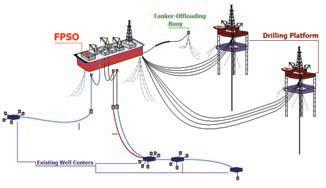
reachable offshore areas but also to hostile, remote and environmental challenging drilling and production areas. The FPSO vessel, equipped with the appropriate mechanisms and control, is a favourable and exciting selection for operating in harsh, corrosive offshore environments.
There are many reasons to use FPSO. First, the FPSO vessel floats, so there’s high mobility and flexibility. Easy to manoeuvre, it has storage capacity, can be self-propelled, can withstand rough seas (weather-vaning) or be moved to avoid severe thunderstorms. So it is ideal for use in rough seas or adverse atmospheric conditions. FPSO can be used for deep sea operations and marginal oil reservoir fields as well as in places where there is no pipeline infrastructure.
The FPSO is best used when it is a lucrative investment by design comparison and manageable risks or requires rapid deployment to the field. It can be standardised in design philosophy.
The type of FPSO discussed here is the ship-shaped vessel. As such, the main subsystem or component is the vessel


With MacRes solution, Maccaferri provides engineers and architects with an ideal option for vertical wall requirement subject to high loads which is aesthetically pleasing. It is an e cient, fast and economical system for building vertical earth retaining structures in a variety of Civil engineering sectors such as highways, marine and river engineering works. Applications can be incorporated in road structures, waterfront structures, civil engineering, rail structures, mine structures and many more.








itself. This is the area where stabilised hydrocarbon or crude oils are eventually stored, prior to being offloaded to other tankers or areas. See Figure 2 for FPSO vessel information.
The FPSO turret is the structure mounted externally or internally at the mid-ship forward or bow location. The technology selection also includes a fixed structure or a disconnectable type. Specifically, the turret contains a swivel stack (Figures 3a/b) which provides continuity paths for fluid and power flow to and from the other structures.
The design provides connecting links or an interfacing mechanism for the mobility of fluids to or from the FPSO and the outside structures or seabed. Through it, power and control signals to the seabed or subsea apparatus are also linked to the FPSO. In addition, it is also the structure to which mooring system devices such as wire rope and anchors connected to the seabed, are attached for dynamic stability of the vessel and for connecting the risers for transfer of fluid or power in and out of the vessel. Besides


risers, the vessel mooring system can also be connected to the sides of the vessel; this design is called spread mooring (see references 12, 13).
This is basically a conduit or pipe that connects subsea wells to the FPSO production heads receipts. It is attached to the FPSO through the turret system or through the production topsides receiving piping system. It is a dynamic structure extending from the seabed and strategically located for topside processing facility at minimum interferences. Figure 4 illustrates the riser design on the side hull.

The FPSO has crude oil or hydrocarbon processing equipment on the top of the vessel hull. This process and utility equipment is fundamentally used for certain processing schemes and is categorically defined as a module.
Process modules include but are not limited to separation unit, gas treatment equipment, compressor system, gas sweetening modules, gas dehydration unit, water treatment and water injection modules.
Used mainly for processing and stabilising crude oil, the key layout approach is to position the module following the effective sequential flow of the processing modules, with emphasis on operation safety. Figure 5 shows a typical FPSO process flow schematic diagram illustrating the topside equipment or module in an optimised arrangement.
Based on this schematic diagram, the modules are organised in such a way that interfacing requirements, monitoring, control and maintenance become supportable and manageable. Moreover, the layout design philosophy focuses on hazardous areas and zones.
The design focuses on the idea that the most hazardous process classified should be located at the far end, typically at the aft of the vessel, farthest from where people or the crew are stationed, such as accommodation areas.
There are other non-process systems or features required for the FPSO vessel to operate effectively and within its design constraints, such as pipe rack system (normally located in the centre of the hull), storage tanks (in the hull),
AFT laydown & Chemical injection module
PW treatment & crude exchanger Module
Crude dehydration & desalination Module
SRU/water treatment module (Supplier)

By MODEC
module
Power Generation Modules (2 nos.)
Midship Lay down module
MP/HP gas compression
FWKO & test separator Module
Flare knockout drums
Gas re -injection, compression & fuel gas module Flare tower / Incinerator
TEG Dehydration module
Gas sweetiening module
Deep Seawater Uptake System Inboard Caisson Type

Cantilevered A-Frame Hose Hang-Off System
Deep Seawater Uptake System/ Seawater Disponal Pipe Outboard Caisson Type
Hose Loading Station
accommodation, helideck, engine room, maintenance & storage areas and bosun area.
The helideck or helicopter deck design, normally of a separate structure is designed for the helicopter landing area. The design should comply with the international aviation authority, and meet industry regulations and requirements.
The treated gas is normally used locally for power generation and for gas reinjection to increase well pressure in the oil recovery activity or is sometimes stabilised for export.
The offloading system includes a system hose capable of transferring the processed oil to the oil tankers for distribution (Figure 6).
Designing FPSO comes with great risks when major factors are not considered. This may result in cost overrun, unnecessary schedule extension, and excessive unbudgeted additional requirements during operations. These risks can increase with lack of coordination, incompetent workforce, and lack of local regulation and process understanding. Therefore it is important that the project team is able to monitor the designing stage vigilantly with periodical update meetings to ensure the major factors are taken into consideration as well as the project boundary is monitored to ensure that the FPSO stays within the basis of design philosophy.

Now there is a waterproofing solution specifically engineered for this application. With the AQUELLA™ system, you can specify with confidence, as it:
• Bonds fully to both substrate and skin wall
• Seals around rebar and penetrations
• Has excellent weather and exposure resistance
• And can be spray-applied
Specifying the AQUELLA™ system delivers peace of mind waterproofing performance for your project, long after it is completed. The main contractor also enjoys speedy spray application, schedule flexibility and minimal application hazards at the job site.
Contact GCP today for a free demo: asia.enq@gcpat.com.
Methods of extracting oil and gas are no longer restricted to a simple static steel legged platform installed in shallow water areas only. Today, the aggressive and competitive energy market has pushed the industry to venture further into deep waters and harsh environments. As such, large mobile and flexible infrastructures such as the FPSO vessels are now favoured and heavily invested in. This approach seems more promising when it comes to harsh conditions of deep-water production areas.
[1] Courtesy of Wikipedia, http://en.wikipedia.org/wiki/Floating_production_ storage_and_offloading.
[2] Courtesy of Sea Production – Generic FPSO Concept.
[3] Courtesy of SBM Offshore General Information Brochure FPSO Topsides
[4] Courtesy of http://www.offshore-technology.com/
[5] Courtesy of http://www.statoil.com/en/technologyinnovation/ fielddevelopment/topside/turretandswivelstacksystem/pages/ theturretandswivelstacksystem.aspx.
[6] The Royal Institution of Naval Architects on The Roll Damping of An FPSO With Riser Balcony And Bilge Keels R Van ’T Veer, SBM Gustomsc, The Netherlands F. Fathi,Sbm Gustomsc, The Netherlands.
[7] SBM Offshore Brochure Swivel Stack
[8] Courtesy of Petroedge FPSO Technology Design and Technology Course Notes 27-29 September 2011 Kuala Lumpur.
[9] Courtesy of Courtesy of Marine Insight, Anish, What is FPSO (Floating Production Storage and Offloading) System, January 16, 2011.
[10] Courtesy of L&T-Valdel Engineering Limited, Module Layout scheme for the OSX-3 FPSO topsides engineered by LTV for MODEC/OGX, http://www.lntvaldel.com/lines-of-business/fpso-topsides.html.
[11] Courtesy of http://www.offspringinternational.com/modules/user/content. php?linkid=97.
[12] William L. Leffner, Richard Pattarozzi, Gordon Sterling, Deepwater Petroleum, Exploration and Production, Pennwell Corporation, 2011.
[13] Martin S. Raymond, William L. Leffner, Oil And Gas Production, in Nontechnical Language, Pennswell, 2006.
Author's Biodata
Ir. Mohammad Adnan Sujan, P.E. is a graduate of Drexel University Philadelphia, USA, in Electrical Engineering. He has vast working experience the oil and gas industry, covering onshore, offshore and Floating Production, Storage and Offloading (FPSO) designs.
In the Forum article titled “Technical Site Visit to Sungei Besi Tunnel” by Ir. Chong Chi Koong, published on Page 32, JURUTERA 2019 (September issue), Hj. Zariffuddin bin Othman’s position was incorrectly printed.
Hj. Zariffuddin bin Othman is M&E manager of PAAB.
The error is much regretted.






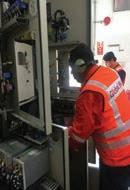

|
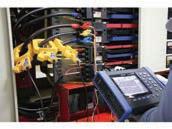
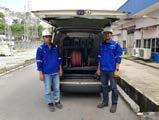




twinoaks.com.my


Most operating plants are classified as hazardous installations due to the handling of large quantities of flammable, explosive and toxic substances on site. The quantities are estimated to be above specified threshold values as according to the Occupational Safety & Health Act 1994, Control of Industrial Major Accident Hazards (CIMAH) Regulations, 1996.
The safety report shall demonstrate to the Department of Occupational Safety & Health (DOSH) that, as an operator of all hazardous facilities, operating units apply strict measures to manage major accident hazards.
Process safety incident and other major accident hazard (MAH) prevention and mitigation require both management and engineering approaches, right from design to operations and maintenance throughout the plant life-cycle. The two keys are managing soft and hard barriers. Soft barriers are managing process safety information, engineering changes, permit to work and safe operating while hard barriers are safety critical elements (SCEs). Here, we will discuss hard barrier or SCEs management process.
The initial processes are identification and establishment of hazard via a Hazard Identification Study (HAZID) and Hazard & Operability Study (HAZOP). SCEs are identified by analysing the hazards, and constitute the means required to manage the associated risks.
The SCE management process has four main stages:
1. Identification of major accident hazards.
2. Identification of safety critical elements involved in managing major accident hazards.
3. Identification of performance standards and assurance processes that ensure the continued suitability of the safety critical elements.
4. Verification that all stages have been undertaken, nonconformances have been identified, controlled and closed-out and hence, major accident hazards are being controlled.
Through the diligent application of these stages, it is possible to meet the requirements for MAH and SCE management process, offering a better way to control risk.
Major Accident Hazard (MAH) is a typical hazard that can
lead to a low probability and high consequence event which requires a different approach from the occupational, or personal, safety management processes/programme.
The basic reason for this is that while single failures can cause dangerous occurrences, major accidents do not generally happen as a result of failure of one piece of equipment or one wrong action by an individual. Instead, they are epitomised by a series of failures of plant, personnel functions & processes as well as procedures.
The key safety plant, systems and equipment required to manage MAH are known collectively as SCEs. The concept of SCEs is perhaps easier to understand if they are considered as barriers between the hazard and the consequence of the incident.
MAHs are established from a Hazard Identification Study as well as Hazard and Operability Study (HAZOP). SCEs are identified by analysing these hazards and constitute the means required to manage the associated risks. The concept of Safety Critical Elements is perhaps made easier to understand if they are hard barriers between the hazard and the consequence of the incident.
In a major accident hazard, each barrier type is represented by one or more SCEs and is designed to stop and minimise the effects of a hazard. The concept of barriers is widely recognised and applied for the MAH and SCE management process. The barrier types to be used are as follows:
• Structural integrity
• Process containment
• Ignition control
• Protection systems
• Detection systems
• Shutdown systems
• Emergency response
• Life saving
Asset shall use these barrier types to indicate and group together the SCEs identified for that particular asset.
For example, in the event of a hydrocarbon gas release (i.e. process containment barrier failing), the ignition control barrier should work to prevent a major accident. Even the

Figure 1: General overview of major accident hazard and safety critical element groups
occurrence of multiple barrier failures, such as process containment and detection systems, will not necessarily lead to a major accident if subsequent barriers such as mitigation (e.g. protection systems and shutdown systems) do not fail. However, a loss of process containment involving toxic gas can lead to a major accident event without other barrier fails should it is manned at that particular time.
Good barrier performance can be achieved through the adoption of well-written performance standards as well as assurance & verification procedures. These procedures must be adhered to by personnel who are competent in their defined roles in maintaining and assuring the performance of SCEs for a specific asset.
This requirement for explicit identification of the MAH and SCEs as a separate sub-set of the asset risks is a characteristic of the MAH and SCEs management process, as it deals specifically with the management of low frequency but high consequence hazards.
Taking the framework of the safety case developed, the MAH (and subsequently, SCEs) are listed in the dedicated subsection for an asset, called Hazard Effect Register. In both cases, this dedicated subsection is required to identify and quantify the MAH and the means of managing these hazards through the subsequent utilisation of SCEs.
The severity of accidents is given in HSE Risk Ranking Matrix (RRM) as shown in Figure 3. Major accidents are
defined as any incident with a severity level of 5 as well as scenarios considered to be more likely, but with a severity level 3 or 4, i.e. E4, D4 and E3 (see Figure 2, Typical Risk Matrix).
The above definition of MAH deliberately excludes occupational hazards. MAH is identified through the use of systematic identification processes, such as HAZID studies and quantified through techniques such as Quantitative Risk Assessment (QRA). To follow best established industry practice, it is necessary to both identify and quantify MAH. The MAH should be identified in a specific subsection of the safety case together with the means used to prevent, detect, control, mitigate, rescue or help recover from a major accident (which effectively become the SCEs).
Once the potential SCEs have been identified, the procedure starts at the top left-hand corner of the flowchart (Figure 3). The flow process shown in the diagram relates to both process as well as non-process systems.
The rationale for excluding any SCE shall be properly documented and approved at the appropriate level. All SCEs are to be registered in the asset register system and shall be periodically reviewed to ensure completeness and adequacy.
The petrochemical industry has had its fair share of disasters. As a result, most countries require some form of safety management for their plants. The Bow-Tie Model or
E Almost Certain Happens several times per year at location
D Likely Happens several times per year in company
C Possible Incident has occurred in our company
B Unlikely Heard of incident in industry
happen
Bow-Tie Analysis is considered as the most comprehensive way for identification of SCEs associated with a given hazard.
The Bow-Tie Analysis or method is simply a pictorial representation of how the management of a hazard and its effects go towards minimising the consequence(s) arising from a hazardous event. The Bow-Tie model (see Figure 4) was developed to meet the requirements for risk assessment while integrating the understanding of how accidents happen, based on the Swiss cheese model.
Using the Bow-Tie methodology to identify barriers, essentially enables one to identify specific roles and functions of each barrier and to understand the possible consequence of the failure of a barrier.
Bow-Ties are not the panacea for all risk management problems. If one wants to quantify the level of risk in absolute terms, then the Bow-Tie method will not help directly. To model complex inter-relationships between risk controls, there are better ways than using Bow-Ties. To identify individual safeguards for every line of every section of every unit in a process facility, a HAZOP study is the solution. But to remove the mystique of risk management and to obtain insights into risk controls that are easy to understand and communicate and, at the same time to realise some efficiency gains, there is no better method than the Bow-Tie.
The Performance Standard shall include acceptance criteria that the SCEs must be developed in detail to enable the practical verification that all barriers are in place and effective. They are initiated during the asset’s define phase and finalised with specific performance requirements and assurance tasks during the execution phase as part of the detailed design.
These are the SCE performance standards to be used and maintained during the operation phase. The performance standards should not be confused with either the design specifications required to establish technical integrity or the preventive maintenance strategy required for the maintenance of equipment, e.g. lubrication. They specifically cover only the specific required to validate that SCEs perform the function necessary for the barrier to be effective.
The development of Performance Standards is an essential stage in the MAH and SCE Management Process. This is because it is necessary to gain confidence that SCEs will fulfil their intended purpose when required. This will be achieved by assessing SCEs against the relevant PS criteria, through assurance and verification activities. All information related to a specific SCE (goal, functionality and specific acceptance criteria) are found in the PS and must be captured by the assetspecific PMMS/SAP system.



TenCate is the leading manufacturer of geosynthetics reputed for its distinct global brands and engineered solutions for civil and environmental engineering applications. TenCate’s award - winning projects and extensive project history is a testament of its experience, expertise and capabilities.
TenCate Geosynthetics makes a difference.





Is the system or equipment identified as MAH or MI Hardware group?
Is the system or equipment identified as safeguards/barriers to manage Very High/ High Risk in HEMP/HER PHA/HAZID studies?

Criticality is High (H) or 1*
Criticality is Medium (M), Low (L), or 2 & 3
Has HSE impact (Major and Catastrophic)
ECA Criticality Class 1/2
Has the system or equipment been subjected to a credible risk assessment?
in Petronas Risk assessment Matrix is the system or equipment criticality at severity 5 or red risk? (ie. risk is E3, E4, B4, A5, B5, C5, D5, E5) COF5 or 4 - as the case may be
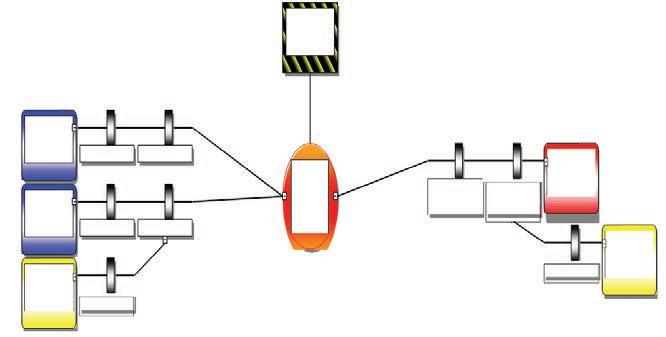
It is important to note that the MAHs vary in severity and probability throughout the life-cycle of the asset. This means that SCEs might change accordingly. To this end, the MAH and SCEs management processes require a full periodic review.
Syed Mohamed Nasir Alhabshi, who has over 20 years of experience in the Oil & Gas industry, is the Technical Authority and Technical Safety Lead for Package 6A and 11, PETRONAS RAPID Project.























































































1-Day on Course “Basic Drilling Engineering”
Date : 13 November 2019 (Wednesday)
Venue : Wisma IEM
Approved CPD Hours : 6.5
Speaker : Ir. Razak Yakob


Time : 9.00 a.m. to 5.30 p.m.
2-Day Refresher Course "In Structural Engineering with Particular Reference to the Chartered Membership Examination of the Institution of Structural Engineers, United Kingdom"
Date : 20-21 November 2019 (Wednesday-Thursday)
Time : 9.00 a.m. to 5.30 p.m.
Venue : Armada Hotel
Approved CPD Hours : 13.5
Speaker : Mr. Rajavel Inbarajan & Mr. Steve Yeung
Green Symposium 2019 on "Sustainable Excellence via Innovative Engineering"
Date : 27 November 2019 (Wednesday)
Time : 9.00 a.m. to 5.30 p.m.
Venue : Armada Hotel
Approved CPD Hours : Applying
Speaker : Various Speakers
1-Day Course on "Adjudication and Mediation: What Engineers and Project Managers Need To Know"
Date : 7 December 2019 (Saturday)
Time : 9.00 a.m. to 5.00 p.m.
Venue : Wisma IEM
Approved CPD Hours : Applying
Speaker : Ms. Samrith Kaur & Mrs. Louise Azmi



Entering into a collaboration is like taking a relationship from an advertisement on Craigslist to a marriage contract. To make the story relatable, the journey has been structured around the concepts in the book, Mars and Venus on a Date, as summarised by the author John Gray, with reference to the experience of the Oil, Gas & Mining Technical Division (OGMTD).
OGMTD has been privileged to facilitate Memorandums of Understanding (MoU) with the Malaysian Oil & Gas Engineering Council (MOGEC, http://mogec.org.my/) and Malaysian Oil & Gas Services Council (MOGSC, https://www. mogsc.org/).
“The secret to the Attraction Stage is staying true to who you are, while still expressing your best and most positive self. This can be a challenge for both men and women because our language and behaviour may be misinterpreted. The challenge during the first stage of dating is to make sure you get the opportunity to express your attraction and get to know the potential partner.”
This is the stage where an MoU partner is selected. Here are some characteristics that attract IEM to a potential partner.
1. Specialty: The IEM is interested in multiple trades and disciplines. It may be that certain sectors do not have a large interest and the IEM cannot spend resources for a disproportionate benefit. If a partner is seen as an auxiliary arm of a Technical Division (TD) or Special Interest Group (SIG), then it can strengthen the offerings of the TD/SIG in question without committing internal resources. For the OGMTD, it needs heavy muscle to provide oil & gas relevant services to IEM members.
2. Contacts: Potential partners may have better access to higher echelons of the industry as compared to the TD/ SIG. Their executive councils and/or management would consist of experienced leaders and well-known corporate figures. For example, MOGSC and MOGEC will have better access to the PETRONAS C-level than IEM.
3. Wider Exposure: A potential partner should have access to audiences that IEM would find hard to penetrate without extraordinary efforts. In this example, if oil & gas has not been a focus for the IEM, engaging in a profitable MoU will help facilitate entry and access to the industry such as IEM branding at trade fairs, conferences and exhibitions, invitations to be panel speakers and to participate in organising committees.
4. Make-Up of Potential Partner: For example, MOGEC and MOGSC members are made up of trade companies in the oil & gas sector, so this will allow IEM to potentially access thousands of individuals who may not be aware of the existence of IEM.
“Just as the first stage of dating is a time to meet and get to know a variety of people, the second stage is the time to focus on one person and give that relationship a chance to grow. Men and women experience uncertainty differently. While a man tends to question whether he wants to pursue a relationship, a woman tends to question where the relationship is going.”
“The challenge here is to recognise that uncertainty is normal during the dating process. Without a good understanding of the uncertainty stage, it is easy for a man to drift from one partner to another and for a woman to make the mistake of pursuing a man more than he is pursuing her.”
Now that the IEM has selected a potential partner, it needs to clear up any uncertainties the partner has about the IEM.
1. Wider Exposure: An MoU partner should have access to a non-profit multi-disciplinary and multi-trade organisation, with an established history, support for obtaining recognised international and national qualifications (MIEM, PE, AER), strong administrative services Continuous Professional Development (CPD) activities, and a home away from home in historic PJ state.
2. Contacts: The strengths of IEM lie in a more diverse set of contacts, especially in the national executive level and public sector. The partner can make use of these special relationships.
3. Administrative Strengths: IEM has a strong and well experienced Secretariat which can support boutique MoU partners to carry out their activities. For example, IEM provided the logistics support to carry out a visit to RAPID in Pengerang together with MOGEC. In addition, IEM has a commercial arm, which can be made use of.
During the wooing stage, it is helpful that the IEM has active members in the management of the potential MoU partner. In this example, OGMTD has embedded members in the councils (MOGEC, MOGSC) and important member companies (MOGEC, MOGSC) to ensure that any fear, uncertainty and doubt are addressed so the relationship can move to the next level.
“The third stage of dating begins when both people feel a desire to date each other exclusively. Both of them want the opportunity to give and receive love in a special relationship without competition. They want to relax and have more time to share with one partner.”
This is where an IEM MoU differs. It is beneficial to IEM to commit to a number of MoUs. However, if there are multiple relationships, there should be different strengths that each partner brings to the table for maximum optimisation:
1. Speciality: Different MoU partners should bring different talents to the relationship. In our example, MOGEC is focused on engineering consultancy services, while MOGSC is focused on the oil & gas industry with engineering as a major part of the business process.
2. Shopping Around: At this stage, IEM may find that there are other potential partners which can fill in gaps left by the current suitor list, such as Society of Petroleum Engineers (subsurface engineering) and Malaysian Offshore Contractors Association (fabricators).
“Once both people have experienced chemistry on all four levels – physical, emotional, mental and spiritual – they are ready to experience the real and lasting love that can grow in the Fourth Stage of Dating: Intimacy. This is the time to relax and just get to know each other on a deeper, more personal level. It’s also important to point out that the intimacy stage is a life-long journey.”
“She should continue to open up more and share her thoughts, feelings and vulnerabilities. He should continue to express his love, show more interest and desire, and look forward to regular physical intimacy. Both of them should grow closer and feel the joy of a deeper emotional connection and increased physical contact.”
This is the stage where both parties can further define whether an MoU is beneficial, as more information is shared before committing to the next stage.
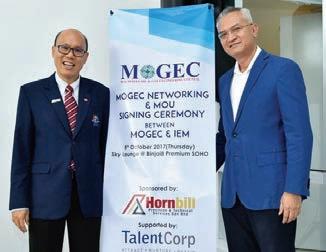
• Writing the MoU: At this level, a draft of the MoU is presented to all parties for approval and alterations as required. In this example, an MoU needs to take into account that members may be either individuals (IEM) or entities (MOGEC, MOGSC).
• Mutual benefits are to be made clear in MoU: This may be a cause for concern if fees to participate in activities are markedly different.
• Opening the kimono: This is where items listed in Steps 1-3 are audited and clarified, to make sure there are no misunderstandings and that what you see is what you get. For the relationships pursued by the OGMTD, this stage presented no surprises, as all was made clear in Step 2.
“The final stage of dating happens when the couple decides to make the ultimate commitment and get married. Both people are clear that they want to be with one another forever. It is a time to build a life and future plans.”
“Engagement is also the best time for a couple to practise before they are married. Marriage is like a magnifying glass. Everything becomes bigger. As the love grows, so do the problems and pressures.”
For an MoU, this is pretty much the anticlimax. MoU documents are prepared, t(s) are crossed and i(s) are dotted. There is no hesitation. It’s pretty much over except for the signing ceremony and making the marriage work, which will be the subject of a future article.
The article attempts to structure the development of MoUs with industrial oil & gas entities within the context of a classic journey as described in Mars and Venus on a Date. It is seen that the journey is the same, with customisation due to the nature and needs of the relationship.

Ir. Dr Oh Seong Por

Medan in North Sumatra is the 3rd largest city in Indonesia. It has a multi-racial population of 3 million. In the city field is the iconic heritage Tirtanadi Water Tower, which was built during the Dutch colonial government and completed in 1908. It was initially owned by NV Water Leiding Maatschappij Ajer Beresih, which was established in 1905 as a subsidiary of the Dutch East Indies Company. Despite being built a century ago, the water tower still functions and supplies water to certain areas in Medan.
The tower is 42m tall and weighs approximately 330 tons. It has a circular 5m high concrete base on which the supporting steel structure is mounted. The steel structure tapers at the top where the water tank, measuring 14m in diameter is seated. The tank has a storing capacity of 1,200 m3. It is painted in attractive colours of white and light orange.
The water tower is made entirely of steel, like the famous Eiffel Tower of Paris, so the locals refer to it as the Eiffel Tower of Medan















reported by


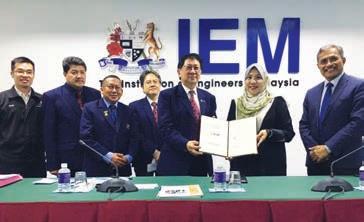
“No man is an island”, especially in the engineering field where engineers of various disciplines need to work together or to deal with other professionals in order to bring values to society. Tasked with bringing development to the nation, engineers must reach out and seek collaboration with others to promote sound professional engineering practices and to enhance society’s awareness of the role of science, engineering and technology in nation building.
On 8 July 2019, IEM marked another collaborative effort when it signed an MoU with Malaysian Oil & Gas Services Council (MOGSC), the association for the services sector of the local oil and gas industry. Formed in 2003, MOGSC has over 500 members, comprising corporate/companies. Its key mission is to promote capabilities of the Malaysian service providers in the oil and gas industry.
At the signing ceremony held in Bangunan Ingenieur, Petaling Jaya, were Ts. Sharifah Zaida Nurlisha binti Syed Ibrahim (President of MOGSC), Ts. Sofiyam Yahya (Advisor of MOGSC), En. Rohazlee Hashim (General Manager of MOGSC), Ir. Ong Ching Loon (Deputy President of IEM),
Ir. Mohd Khir bin Muhammad (Hon. Secretary of IEM), Ir. Prof. Dr Jeffrey Chiang Choong Luin (Vice President of IEM) and committee representatives from IEM’s Oil, Gas, Mining Technical Division (OGMTD).
The event started with a brief introduction of both organisations. The MoU was signed and exchanged between IEM and MOGSC, followed by a photo-taking session.
Ir. Ong outlined the strength of IEM’s membership, professional engineering competency and its affiliation with other professional engineering institutions within ASEAN as well as other parts of the world, which will be beneficial to MOGSC.
Ts. Sharifah said there are 3 immediate areas where both parties can work together, namely engineering competency, route to professional engineer and mobility of engineering services.
The event, which ended with a short networking session, marked the beginning of an extended network and collaborative opportunities for both IEM and MOGSC members. Kudos to the OGMTD Committee for spearheading this effort.
reported by

Ir. Shazlan Rahman
An analysis carried out by IHS Markit in 2016 (1) revealed that the annual expenditure of global offshore decommissioning works will increase from US$2.4 billion in 2015 to US$13 billion by 2040. This will definitely be a lucrative market that Malaysian companies can tap into. However, decommissioning works are relatively new to the Malaysian oil and gas (O&G) industry. The industry must catch up with the technical know-how in order to tap into decommissioning works.
Realising this, the IEM Oil, Gas & Mining Technical Division (OGMTD) organised a technical talk on Effect of Environmental Forces on Offshore Structure Decommissioning Operation. The aim was to provide an overview of engineering analyses and offshore activities involved in offshore decommissioning work, including relevant codes and standards that must be considered.
The talk on 22 June 2019 at Wisma IEM in Petaling Jaya, Selangor, was attended by 30 engineers. The invited speaker was Ir. Mohd Fakhruddin who has almost a decade of experience working in the offshore industry, including decommissioning work.
Ir. Fakhruddin started his lecture with the background of offshore decommissioning work. In Malaysia, a significant number of offshore platforms were constructed in the 1970s and 1980s; these had passed their design life-cycle and had to be decommissioned.
There are some options in decommissioning offshore platforms. The first is to remove the structure and bring it back to land for material recycling and disposition. A second option is to remove the topsides structure and to place it on the seabed as an artificial reef. For small platforms, the second option is more economical and beneficial to the environment and the talk focused on this second option.
Ir. Fakhruddin then talked about the processes involved to place the topside structure on the seabed. These were:
1. Preparing the topsides: All relevant equipment are removed from the topside structure. A key section of the topside will be cut to prepare it for the next stage, lifting.
2. Lifting the structure in air: A crane vessel is used to lift the structure from its jacket.
3. Lowering to the structure through the splash zone (i.e. sea surface): This is the most critical stage in decommissioning work as the hydrodynamic effect from the sea will come into the picture. Strict control when lowering the topside structure is required to ensure the hydrodynamic effect is within the capacity of the crane.
4. Lowering below sea level: Once the structure is fully submerged, it will be lowered to the seabed.
Ir. Fakhruddin discussed the engineering analyses and the associated design codes that must be considered. In the past, he used mostly DNV design codes. He also explained the design parameters that need to be considered, such as wave height, wave period and wave speed as well as key health and safety aspects that must be considered during the decommissioning operation.
To end the talk, Ir. Shazlan Rahman presented a gift and a certificate to Ir. Fakhruddin as a token of appreciation. Due to high interest from engineers during the talk, IEM OGMTD will be organising a 1-day course on offshore structural decommissioning. .
[1] IHS Markit (29 Nov 2016). Decommissioning of Ageing Offshore Oil and Gas Facilities Increasing Significantly, with Annual Spending Rising to $13 Billion by 2040. Retrieved 29 Sep 2019, from https://news.ihsmarkit.com/



3.
reported by


The Mechanical Engineering Technical Division (METD) Membership Drive & Promotions Sub Committee (MDP) Outreach Programme took place on 19-20 March 2019. Its main objectives were to engage with engineers and future engineers in Johor, to promote IEM membership and to share experiences with practicing engineers on current issues in the industry.
The outreach visits were to UTHM, IEM Southern Branch and UTM. The team of 6 members was led by MDP Chairman Ir. Fam Yew Hin, Ir. Luk Chau Beng, Ir. Lum Youk Lee, Ir. Ong Hoo Teong, Ir. Dr Hasril and Ir. Dr Cheong Thiam Fook. They first went to UTHM in Batu Pahat, where 2 parallel sessions were held with students and lecturers.
Ir. Fam conducted a talk for 40 lecturers while Ir. Dr Cheong spoke to more than 300 students. Both talks were very well received with many questions about engineering ethics by the students and how to become MIEM/PE by the lecturers.The team enjoyed a networking lunch hosted by the UTHM engineering faculty staff in their library building, with an exchange of opinions on engineering sectors in Malaysia.
They then left for JB for an evening technical talk at the IEM Johor Branch training floor. The talk attracted some 50 engineers who listened to Ir. Lum sharing his vast experiences in the design, building, operating and
maintenance of shopping malls. The talk was not only full of fruitful knowledge and experiences on the management of shopping malls but was also kept lively with humorous analogies.
After the talk, the team was treated to a networking dinner hosted by IEM Southern Branch Chairman Ir. Teo and his committee members. There were discussions on potential collaboration between Johor Branch, METD and MDP as well as an exchange of other ideas.
The last session of the outreach programme was at UTM, again with 2 parallel sessions. Ir. Fam spoke to the lecturers about IEM, international affiliation, enhanced PI and various routes to MIEM/PE. The 30 lecturers who attended, raised many questions about technical reports and the PI interview. At the other session, UTM alumni Ir. Ong and Ir. Luk spoke on the future of engineering as a career and its ethics to 200 young students. Among the questions they asked was how Ir. Ong developed his successful career in ACMV industry. They also said they hoped to emulate Ir. Ong.
The METD team left UTM for KL at about 6.30 p.m. The team thanks all those who have hosted the trip, for their kind hospitality. .

Yes! I would like to be a subscriber of The Institution of Engineers, Malaysia’s publications
Name: _________________________________________________________________________________________________________
Mailing Address: _________________________________________________________________________________________________
Country: ________________________
Company/Institution: ______________________________________________________________________________________________
Title: ____________________________________________________________________________________________________
Telephone No: _________________________ Fax: _________________________ Email: _________________________________
New Subscriber Renewal
Please commence my subscription from: _________________________(month/year) Signature: _______________________________
To start your subscription of IEM’s publications, complete this form and mail it back to the address below. For faster processing, fax it to: +603 7493 1047. Thank you.
What is your primary job title?
Corporate Management (including chairman, president, proprietor, partner, director, vice president, general manager, division manager, import/export manager, other corporate title)
Management (including project/contract/equipment/service/transport district manager, clerk of works, other technical or operating manager)
Engineering/Design (including chief engineer, chief designer, civil/ highway/mechanical/planning engineer, other engineering/design title)
Buying/Purchasing (including chief buyer, buyer, purchasing officer, other buying/purchasing title)
Titles allied to the field (architect, consultant, surveyor, research and development professor, lecturer, supervisor, superintendent, inspector or other allied title)
Others (please specify) ____________________________
What type of organisation do you work in? (Tick one box only)
Contractor
Sub-contractor specialist
Design and build contractor
Consulting engineering/architectural/quantity surveying practice
Mining/quarrying/aggregate production company
Petroleum producer
International/national authorities
National/regional/local government
Public utilities (electricity, gas, water, deck and harbour, other)
Manufacturer
Distributor/importer/agent
Construction department of large industrial/Commercial concern
Association/education establishment/research
Construction equipment hire/rental company
Project/construction management consultancy
Others (please specify) _______________________________
What are the main activities of your organisation? (Tick all that apply)
Constructions of:
Roads/bridges

Manufacturer of:
Construction equipment
Dams/reservoirs/irrigation Cement
Harbours/offshore structures Other construction materials
Foundations/tunnels Distribution Pipelines/refineries Construction equipment
Structures/steel work Construction materials
Building (commercial, industrial) Hire/rental of construction equipment
Housing Design
Construction management Earth-moving/open cast mining
Deep mining Aggregate production
Others (Please specify) _________________________________________
Rate (Please tick)
RM360.00 - 12 issues of JURUTERA
RM84.00 - 2 issues IEM Journal (Half-yearly)
Terms and Conditions:
1) The subscription is to be prepaid.
2) Please make cheque payable to Dimension Publishing Sdn. Bhd.
3) Subscriptions are not refundable.
4) Magazine/s will be sent to the mailing address given.
5) Students are entitled for a 20% discount from the above subscription rate.
6) Students must submit a photocopy of the student identification card together with the payment.
7) The above rate is inclusive of delivery charges and applicable in Malaysia only.
8) Additional delivery charges will apply to overseas subscribers.
For subscription enquiries, please contact +603-7493 1049 or email to info@dimensionpublishing.com

Wfrom travelling to different parts of the globe,
fascinating insights of the places and people he encounters and sharing his experiences with others through his photographs and writing.
e reached Puerto Punta Bandera shortly before sunrise. After buying our national park tickets, we boarded Catamaran Maria Turquesa for a cruise on the immense Lago Argentina, Argentina’s largest body of fresh water.
After spending 3 days in El Chalten to fully enjoy the spectacular mountains and the marvellous trekking available in the northern part of Parque Nacional de Los Glaciares, my wife and I, together with my two brothers and their spouses, travelled by bus to El Calafate to explore the southern part which, in stark contrast, is well known for its many glaciers and the best way to scrutinise those glaciers is, without a doubt, a cruise on Lago Argentina.
Our catamaran set sail at about 9 a.m. and headed northwest. In Brazo Norte, an arm of the 1600 sq. km. lake, we encountered a gargantuan iceberg and the boat sailed around it slowly, allowing us a close inspection of the chunk of ice from different angles. Under the low morning sun, the ice put on a magic show with changing tints of blue and varying degrees of translucence.
Heading southwest, we passed another large iceberg and a hanging glacier, Totalizador, before coming close to the toe or terminus of Spegazzini Glacier. With an area of 134 sq. km., this glacier has a toe that varies in height from 80 to 135m. We had a close inspection of the glacier from edge to edge.
The catamaran then turned back and headed north to Brazo Upsala but as it did not get near Upsala Glacier, we could only look at it from afar. Four years ago a landslide caused
a mini-tsunami in the arm and since then, boats were not allowed to approach the glacier.
While the passengers were enjoying a simple lunch, the catamaran back-tracked all the way to Punta Bandera and headed west into the narrow Canal de los Tempenos, coming to within 350m of the toe of Perito Moreno Glacier. With an area of 250 sq. km., this glacier has a gently-curved toe measuring 5km in width and varying from 50 to 70m in height. The boat moved slowly from one edge to the other to allow all passengers a close inspection of this spectacular glacier. Like the glaciers we visited earlier, this one also originated from the vast ice-field covering this part of the Andes Mountain Range which forms a natural boundary between Argentina and Chile.
Unlike most glaciers in the world which are retreating because of global warming, Perito Moreno is stable. In fact, it advances up to 2m a day and chunks of ice 20 storeys tall calve and crash into the channel every now and then with thunderous roars reaching the ears of spectators a fraction of a second after their eyes have witnessed the spectacle.
Perito Moreno Glacier is separated from Magallanes Peninsula by a narrow strip of water that is partly Canal de los Tempenos and partly Brazo Rico. As the glacier advances, it eventually abuts the peninsula at the narrowest point and an ice-dam is formed, blocking the natural flow from Brazo Rico to the channel. Water in Brazo Rico then rises, and the increasing pressure eventually ruptures the ice-dam, causing it to breach progressively from the bottom upwards until a total collapse unites the two waters again. This series of events occur cyclically and one must be extremely lucky to visit at the right time to witness the ice-dam collapsing.

A network of boardwalks on the slope facing the glacier connects a jetty at the channel to a visitors centre on top of the peninsula. After our cruise, we spent two hours on the boardwalks to view the glacier again from different angles.
Named after Francisco Pascasio Moreno (1852-1919), an outstanding Argentinean scientist/explorer who played a key role in settling a boundary dispute between Argentina and Chile, Perito Moreno Glacier is truly one of the most beautiful glaciers in the world and it is so easily accessible.
Kepada Semua Ahli,
Tarikh: 17 Oktober 2019
MENDUDUKI TEMUDUGA PROFESIONAL TAHUN 2019
Berikut adalah senarai calon yang layak untuk menduduki Temuduga Profesional bagi tahun 2019.
Mengikut Undang-Undang Kecil IEM, Seksyen 3.8, nama-nama seperti tersenarai berikut diterbitkan sebagai calon-calon yang layak untuk menjadi Ahli Institusi, dengan syarat bahawa mereka lulus Temuduga Profesional tahun 2019.
Sekiranya terdapat Ahli Korporat yang mempunyai bantahan terhadap mana-mana calon yang didapati tidak sesuai untuk menduduki Temuduga Profesional, surat bantahan boleh dikemukakan kepada Setiausaha Kehormat, IEM. Surat bantahan hendaklah dikemukakan sebulan dari tarikh penerbitan dikeluarkan.
Ir. Mohd Khir bin Muhammad FIEM, PEng Setiausaha Kehormat, IEM (Sessi 2019/2020)
PERMOHONAN BARU
Nama Kelayakan
KEJURUTERAAN AWAM
AHMAD ROZIAN BIN OTHMAN BSc (STRATHCLYDE) (CIVIL, 1986)
MAK GUO SHAO BE HONS (TSINGHUA UNIVERSITY) (STRUCTURE, 2001)
MUHAMMAD BIN A. BAKAR BE HONS (NOTTINGHAM TRENT UNIVERSITY) (CIVIL, 2006)
MUHAMMAD SAIFULLAH BIN HASIM BE HONS (UTM) (CIVIL, 2010)
KEJURUTERAAN ELEKTRIKAL
MOHD FADLI BIN OTHAMAN BE HONS (UiTM) (ELECTRICAL, 2006)
KEJURUTERAAN PEMBUATAN
NOR MOHD UZAIR BIN NORSAHPERI BME HONS (UTeM) (MANUFACTURING PROCESS, 2014)
PERPINDAHAN AHLI
No. Ahli Nama Kelayakan
KEJURUTERAAN ALAM SEKITAR
28850 CHEN YI SHENG BE HONS (NUS) (ENVIRONMENTAL, 2005)
KEJURUTERAAN ELEKTRIK
76197 MUHAMMAD JAMALULLAIL BIN MAHAMAD ISA BE HONS (UNITEN) (ELECTRICAL POWER, 2014)
98411 NG KAH JUN BE HONS (UNITEN) (ELECTRICAL & ELECTRONICS, 2013)
KEJURUTERAAN ELEKTRONIK
18510 ABANG ANNUAR EHSAN BE HONS (NEW SOUTH WALES) (ELECTRICAL, 1996) MSc (UKM) MICROELECTRONICS, 2002) / ME (UPM) (MANUFACTURING SYSTEM, 2016) PhD (UiTM) (2010) / PhD (UKM) (MICROENGINEERING & NANOELECTRONICS, 2013)
88784 LOHGHESWARY A/P NAGARETHINAM BE HONS (ELECTRICAL-ELECTRONIC, 2003) MSc (UKM) (MATHEMATICS, 2004) PhD (UKM) (ENGINEERING EDUCATION, 2018)
90346 MOHD RIDZUAN BIN CHE ISMAIL BE HONS (UiTM) (ELECTRICAL, 2009)
KEJURUTERAAN MEKANIKAL
87137 LOO QAI SHIEN BE HONS (NILAI UNIVERSITY) (MECHANICAL, 2015)
66532 MOHD FADZIL ALI BIN AHMAD BE HONS (MANCHESTER) (MECHANICAL, 2006) ME (UTM) (MECHANICAL, 2011) PhD (UTP) (MECHANICAL, 2018)
76205 MUSAINI BIN RAMLEE ME HONS (MANCHESTER) (MECHANICAL, 2014)
87324 NIK NORMUNIRA BINTI MAT HASSAN BE HONS (UTHM) (MECHANICAL, 2010)
KEJURUTERAAN STRUKTUR
47524 LIM CHONG HUI BE HONS (UKM) (CIVIL & STRUCTURE, 2012)
PERMOHONAN BARU / PERPINDAHAN MENJADI AHLI KORPORAT
No. Ahli Nama Kelayakan
KEJURUTERAAN AWAM
79262 CHOW MING FAI BE HONS (UTM) (CIVIL, 2007) PhD (UTM) (CIVIL, 2012)
KEJURUTERAAN ELEKTRIKAL
20105 ZUHAINA BINTI ZAKARIA BE HONS (UTM) (ELECTRICAL, 1989) MSc (NAPIER) (INFORMATION TECHNOLOGY (CONTROL SYSTEMS TECHNOLOGY), 1997) PhD (STARTHCLYDE) (2005)
Pengumuman yang ke-133
SENARAI PENDERMA KEPADA WISMA DANA BANGUNAN IEM
Institusi mengucapkan terima kasih kepada semua yang telah memberikan sumbangan kepada tabung Bangunan Wisma IEM. Ahli-ahli IEM dan pembaca yang ingin memberikan sumbangan boleh berbuat demikian dengan memuat turun borang di laman web IEM http://www.iem.org.my atau menghubungi secretariat di +603-7968 4001 / 5518 untuk maklumat lanjut. Senarai penyumbang untuk bulan September 2019 adalah seperti jadual di bawah:




















































































2-Day Course on “Design of Sprinkler Systems Reference to MS 1910 Covering Professional Competency Examination (PCE) Syllabus”
Date : 10-11 December 2019 (Tuesday-Wednesday)
Time : 9.00 a.m. to 5.30 p.m.
Venue : Wisma IEM
Approved CPD Hours : Applying
Speaker : Ir. Gary Lim
PERMOHONAN MENJADI AHLI SISWAZAH
No. Ahli Nama Kelayakan
KEJURUTERAAN ELEKTRIKAL
101019 RIDZWAN HAFIDZ BIN HAYAZI
99527 MOHD FIKERI BIN RASIDI
100923 JONG SHENG KEE, ANTHONY
100917 LIM CHIA CHUN
99534 MOHAMMAD AFIF BIN SHARANI
99524 NOORHISHAM BIN MOHD NOR
100787 ABDUL HADI BIN AMRAN
100667 SOW SEE YEAN
100688 MUHAMMAD ASYRAF AFIQ BIN AZMI
101001 AZAZUDIN BIN OMAR
100692 MUHAMMAD HAFIZ BIN TOOHA
101026 MUHAMMAD SYAFIQ BIN MOHD FOUZI
100786 JOEYRIDE ROWENN JOM
100674 LIM WEE SHENG
100717 NURAINA AKMAL BT MISMAN
100814 ASLAM BIN A. GHANI
B.E.HONS.(UPNM)(ELECTRICAL & ELECTRONIC-POWER, 2012)
B.E.HONS.(USM)(ELECTRICAL, 2012)
B.E.HONS.(UTAR SG LONG) (ELECTRICAL & ELECTRONICS, 2018)
B.E.HONS.(UTAR SG LONG) (ELECTRICAL & ELECTRONICS, 2018)
B.E.HONS.(UTeM)(ELECTRICALINDUSTRIAL POWER, 2013)
B.E.HONS.(UTeM)(ELECTRICALPOWER ELECTRONIC & DRIVE, 2007)
B.E.HONS.(UTHM) (ELECTRICAL, 2011)
B.E.HONS.(UTHM) (ELECTRICAL, 2013)
B.E.HONS.(UTHM) (ELECTRICAL, 2015)
B.E.HONS.(UTM)(ELECTRICAL, 2003)
B.E.HONS.(UTM)(ELECTRICAL, 2014)
B.E.HONS.(UTM)(ELECTRICAL, 2015)
B.E.HONS.(UTM)(ELECTRICAL, 2016)
B.E.HONS.(UTM)(ELECTRICALMECHATRONICS, 2012)
B.E.HONS.(UTP)(ELECTRICAL & ELECTRONICS, 2015)
B.E.HONS.(UTP)(ELECTRICAL & ELECTRONICS, 2017)
KEJURUTERAAN ELEKTRONIK
100719 MOHD HAPIZIE BIN CHE DERAMAN
100888 NG KOK FUI
100816 PETRUS SIMON ANAK IBAI
101029 KHAIRUL NAZMI BIN KHALID
100724 SITI NOR AZRA BINTI MOHD ANUAR
100691 NGOO SEONG BOON
B.E.HONS.(MMU) (ELECTRONICS, 2014)
B.E.HONS.(MMU) (ELECTRONICSTELECOMMUNICATIONS, 2012)
B.E.HONS.(UiTM)(ELECTRICAL, 2012)
B.E.HONS.(UiTM) (ELECTRONICSINSTRUMENTATION, 2016)
B.E.HONS.(UMP)(ELECTRICALELECTRONICS, 2012)
B.E.HONS.(USM)(ELECTRICAL & ELECTRONIC, 1997)
100930 CHENG KIA CHIEN B.E.HONS.(UTAR KAMPAR, ELECTRONIC, 2018)
100681 DR MOHAMAD SHUKRI BIN ZAINAL ABIDIN
100848 AIMIE AMALINA BINTI AZMAN
B.E.HONS.(UTM)(ELECTRICALMECHATRONIC, 1998) M.E.(UTM)(ELECTRICAL, 2002) PhD.(TOKYO UNI. OF AGRICULTURE & TECHNOLOGY, 2014)
B.E.HONS.(UTM)(ELECTRICALMEDICAL ELECTRONICS, 2011)
101040 ZULHELMI BIN ZULKIFLY B.Sc.(INHA UNI.) (ELECTRONIC, 2014) M.Sc.(KINGS)(NUCLEAR POWER PLANT, 2016)
100890 SHAIFUL ZAHRIN SULAIMAN Dipl-Ing.FH.(UNIVERSITY DORTMUND)(ELECTRONIC, 2005)
KEJURUTERAAN KIMIA
101030 LIM MEN WAI B.E.HONS.(MALAYA) (CHEMICAL, 2011)
100686 TAN CHEE KEONG B.E.HONS.(MALAYA) (CHEMICAL, 2012)
100779 CHOO CHENG KEONG B.E.HONS.(MONASH UNI.)(CHEMICAL, 2015) M.E.Sc.(MONASH UNI.)(2017)
100783 LIM CHUN KIT, JIMMY B.E.HONS.(MONASH UNI.) (CHEMICAL, 2017)
100897 LIM YU ZHENG, VINCENT B.E.HONS.(MONASH UNI.) (CHEMICAL, 2018)
101051 MOHD NAIM FIRDAUS BIN MOHAMAD NOR B.E.HONS.(UiTM)(CHEMICAL & PROCESS, 2012)
101043 NURAINI BINTI MOHAMED SIDEK B.E.HONS.(UMP)(CHEMICAL, 2016)
99520 WONG MEI LIN B.E.HONS.(UPM)(CHEMICAL, 2013)
100881 RADIN AZLINA BINTI RADIN JALALUDDIN B.E.HONS.(USM)(CHEMICAL, 1999)
100927 CHIA WEI HAO B.E.HONS.(UTAR SG LONG) (CHEMICAL, 2018)
100926 CHUA BOON SIAN B.E.HONS.(UTAR SG LONG) (CHEMICAL, 2018)
100925 HONG MING ZHOU B.E.HONS.(UTAR SG LONG) (CHEMICAL, 2018)
100922 LEE PING KWONG
100921 LEE SHANG ZE
100913 NGU TIEN WEI, JOANNES
100911 TAN BOON LENG
100910 TAN KIEN YEW
100909 TAN KIM KEAN
100907 TEO YI FEI
100905 THAM ZHI YOU
100903 YAP WAI HONG
100902 YONG LI XIAN
100873 DR NORHIDAYAH BINTI IDERIS
99522 DR DAYANG
SALYANI BINTI
ABANG MAHMOD
100677 ARIFF SHAH ISMAIL
100708 MUHAMMAD FAZADIN RIZAL BIN YAHYA YUSSOF
100868 DR HANEE FARZANA BINTI HIZADDIN
100825 ANG SU LING
B.E.HONS.(UTAR SG. LONG) (CHEMICAL, 2018)
B.E.HONS.(UTAR SG. LONG) (CHEMICAL, 2018)
B.E.HONS.(UTAR SG. LONG) (CHEMICAL, 2018)
B.E.HONS.(UTAR SG. LONG) (CHEMICAL, 2018)
B.E.HONS.(UTAR SG. LONG) (CHEMICAL, 2018)
B.E.HONS.(UTAR SG. LONG) (CHEMICAL, 2018)
B.E.HONS.(UTAR SG. LONG) (CHEMICAL, 2018)
B.E.HONS.(UTAR SG. LONG) (CHEMICAL, 2018)
B.E.HONS.(UTAR SG. LONG) (CHEMICAL, 2018)
B.E.HONS.(UTAR SG. LONG) (CHEMICAL, 2018)
B.E.HONS.(UTM)(CHEMICALBIOPROCESS, 2009) PhD.(USM) (MEMBRANES/MEMBRANE TECHNOLOGY FOR ENVIRONMENTAL POLLUTION CONTROL, 2015)
B.E.HONS.(UTM) (CHEMICAL-GAS, 2006)
M.E.(UTM)(GAS, 2011) PhD. (UNIMAS)(MECHANICAL, 2018)
B.E.HONS.(UTP)(CHEMICAL, 2009)
B.Sc.(QUEENS'S UNI.) (CHEMICAL, 2015)
M.E.HONS.(THE UNI. OF MANCHESTER)(CHEMICAL, 2009) PhD.(MALAYA) (PURIFICATION & SEPARATION PROCESSES, 2016)
M.E.HONS.(THE UNI. OF NOTTINGHAM)(CHEMICAL WITH ENVIRONMENTAL, 2016)
KEJURUTERAAN KOMPUTER
100796 MUHAMMAD ZARIM BIN ABDUL TAHRIM
100694 SITI NUR THAZLIAH BINTI MOHD THAZALI
100849 SYED FIRDAUS BIN SAYED ROHANI
100893 KANG SIEW PHEI
B.E.HONS.(UTM) (COMPUTER, 2003) M.E.(UKM) (COMMUNICATION & COMPUTER, 2011)
B.E.HONS.(UTM)(COMPUTER, 2004) M.Sc.(UUM) (INFORMATION TECHNOLOGY, 2012)
B.E.HONS.(UTM)(COMPUTER, 2009)
B.E.HONS.(UTM)(COMPUTER, 2010)
100671 NIZAM ARSHAD B.Sc.(CASE WESTERN RESERVE UNIVERSITY) (COMPUTER, 1988)
KEJURUTERAAN MEKANIKAL
101028 MOHD NAZUL BIN ABDUL KADIR
100729 MOHD ADEEB AISAMUDDIN BIN MOHAMMED SHAHDAN
99528 MOHD AZLAN FAHMI BIN MUHAMMAD AZMI
100869 TUH CHUNG MUANG, PAUL
99523 KHALID ZEB BIN MOHAMMAD YASEEN
101014 KHAIRIL AZWAN BIN MOHAMED ISA
101061 ONG TENG HAAN
100818 WONG SYII HUY
100811 MOHAN RAJ PARANJOTHY
100728 LUKE MANIYAMUTHAN A/L MANICKAM
100884 MOHAMED SHAFIQ BIN MOHAMED SHAJA
99529 MOHD FAIZ BIN ADAM
100824 OW SIEW WAI
100793 TING GOA LOONG
101015 CH'NG JIA HUI
100690 MOHD SYAFIQ HAFIFI BIN KAMISAN
100664 MOHD AZWAN AZAHARI
100722 LAU CHUN KIT
100678 GOH CHUA MENG
B.E.HONS.(UNISEL) (MECHANICAL, 2010) M.Sc. (UTP)(ELECTRONICS SYSTEMS, 2014)
101021 DR SITI NURHAIDA KHALIL B.E.HONS.(UNITEN) (MECHANICAL, 2001) M.Sc. (LOUGHBOROUGH UNI.) (ENGINEERING DESIGN, 2005) PhD.(LOUGHBOROUGH UNI.) (2012)
101018 AHMAD ANAS BIN ABDUL AZIZ
B.E.HONS.(UNITEN) (MECHANICAL, 2012)
99518 MUHAMMAD HASIF BIN JAMIL B.E.HONS.(UNITEN) (MECHANICAL, 2013)
101037 SHUREENDRAN MUNIANDY RAJAN B.E.HONS.(UNITEN) (MECHANICAL, 2014)
101013 THINESH SUPPAIAH B.E.HONS.(UNITEN) (MECHANICAL, 2014)
100789 MOHD FADHLI ZIL IKHRAM BIN CHE ZAHARI B.E.HONS.(UNITEN) (MECHANICAL, 2015)
100672 AHMAD LUTFI BIN YAACOB B.E.HONS.(UNITEN) (MECHANICAL, 2015)
100874 HAFIZUDDIN MOHD LOWHIM B.E.HONS.(UNITEN) (MECHANICAL, 2016)
99531 PRAMILA NAIR PREBAKARRAN B.E.HONS.(UNITEN) (MECHANICAL, 2017)
100727 PRAVIIN JAYAKUMAR B.E.HONS.(UNITEN) (MECHANICAL, 2017)
100891 CHEN SHIANG YIH B.E.HONS.(UPM)(MECHANICAL, 1997)
100675 NAZRUN NABILL BIN AZLAN SHAH B.E.HONS.(UPNM) (MECHANICAL, 2015)
100880 MUHAMMAD KHAZIQ BIN SAZALI B.E.HONS.(UPNM) (MECHANICAL, 2017)
100799 NANDHAKUMAR A/L NARAYANASAMY B.E.HONS.(USM)(MECHANICAL, 2002)
100725 ABDUL MUN'IM BIN ABDUL RAHMAN B.E.HONS.(USM)(MECHANICAL, 2010)
100916 LIM HOON HOON, DENISE B.E.HONS.(UTAR SG. LONG) (MECHANICAL, 2018)
100914 LIM YUE HENG B.E.HONS.(UTAR SG. LONG) (MECHANICAL, 2018)
100912 ONG JING YUAN B.E.HONS.(UTAR SG. LONG) (MECHANICAL, 2018)
100906 TEOH KAI JET B.E.HONS.(UTAR SG. LONG) (MECHANICAL, 2018)
101042 CHONG CHI LIANG B.E.HONS.(UTAR) (MECHANICAL, 2011)
100807 LIM JIN HOW B.E.HONS.(UTAR) (MECHANICAL, 2018)
100794 JOE MCLAREN ANAK TOMMY B.E.HONS.(UTeM) (MECHANICAL-STRUCTURE & MATERIAL, 2015)
101034 NEAL EDDLE LADUING B.E.HONS.(UTHM) (MECHANICAL, 2008)
100812 AHMAD AFIF BIN MOHAMAD ZEN B.E.HONS.(UTHM) (MECHANICAL, 2010)
100875 AFIF HAFIZ BIN MOHAMAD B.E.HONS.(UTHM) (MECHANICAL, 2011)
100823 CHAN CHOON KIT B.E.HONS.(UTHM) (MECHANICAL, 2011)
B.E.(HIRISHIMA UNI.) (MECHANICAL SYSTEM, 2012)
B.E.(VANDERBILT UNI.) (MECHANICAL, 2006) M.Sc. (VANDERBILT UNI.)(2012)
B.E..(UNI. OF APPLIED SCIENCES BINGEN) (MECHANICAL,2010) M.Sc. (UTM)(INDUSRIAL, 2017)
B.E.HONS.(CURTIN UNI. OF TECH.)(MECHANICAL, 2014)
B.E.HONS.(CURTIN UNI. OF TECH.)(MECHANICAL, 2017)
B.E.HONS.(IIUM)(MECHANICALAUTOMOTIVE, 2014)
B.E.HONS.(INTI INT. UNI.) (MECHANICAL, 2017)
B.E.HONS.(MALAYA) (MECHANICAL, 1983)
B.E.HONS.(MALAYA) (MECHANICAL, 1985)
B.E.HONS.(MALAYA) (MECHANICAL, 1992)
B.E.HONS.(MMU) (MECHANICAL, 2015)
B.E.HONS.(MONASH UNI.) (MECHANICAL, 2009)
B.E.HONS.(NUS)(MECHANICAL, 1990)
B.E.HONS.(SWINBURNE UNI. OF TECH.)(MECHANICAL, 2016)
B.E.HONS.(TAR UC) (MECHANICAL, 2016)
B.E.HONS.(UiTM) (MECHANICAL, 2011)
B.E.HONS.(UiTM) (MECHANICAL, 2012)
B.E.HONS.(UNI. OF WOLLONGONG)(MECHANICAL, 2014)
101062 CHAI CHUAN HAO B.E.HONS.(UTM)(MECHANICAL, 2012)
100889 ABDUL HALIM BIN MOHD SALLEH B.E.HONS.(UTM)(MECHANICAL, 2016)
100892 DR NURUL HUDA BINTI AHMAD B.E.HONS.(UTM)(MECHANICALAERONAUTICS, 2007) M.E.(UTM)(MECHANICAL, 2011) Eng.D.(TOKYO INST. OF TECH.)(INTERNATIONAL DEVELOPMENT ENGINEERING, 2016)
101016 JAMILAH BINTI MOHD RAFI
100883 MOHD ARIF BIN ABDUL LATIP
101047 MOHD FIRDAUS BIN SAID
101065 MOHAMMAD FARHAN BIN ZAMMERI
100684 WONG YEW BONG, JONATHAN
99535 JONATHAN YEK LI ZIA
100886 LEE CHEONG YOONG
100726 FOUAD ABDUL RAHIM MOKTI
B.E.HONS.(UTM)(MECHANICALAERONAUTICS, 2015)
B.E.HONS.(UTM)(MECHANICALAUTOMOTIVE, 2008)
B.E.HONS.(UTM)(MECHANICALMARINE TECH., 2002)
B.E.HONS.(UTP)(MECHANICAL, 2014)
B.Sc.HONS.(QUEEN'S UNI.)(MECHANICAL, 2015)
M.App.Sc.(QUEEN'S UNI.)(MECHANICAL & MANUFACTURING, 2017)
M.E.HONS.(THE UNI. OF BATH) (MECHANICAL & ELECTRICAL, 2014)
M.E.HONS.(THE UNI. OF NOTTNGHAM)(MECHANICAL, 2014)
M.E.HONS.(UCL)(MECHANICAL, 2015)
Note: Continuation of the Transfer Graduate, Graduate, Incorporated, Affiliate and Associate would be published in December 2019. For the list of approved “ADMISSION TO THE GRADE OF STUDENT”, please refer to IEM web portal at http://www.myiem.org.my.

JURUTERA has an estimated readership of 198,000 professionals. Our esteemed readership consists of certified engineers, decision making corporate leaders, CEOs, government officials, project directors, entrepreneurs, project consultants, engineering consulting firms and companies involved with engineering products and services.
Our business partners can be assured that their products and services will be given the circulation and exposure they deserve, thus maintaining a sustained advertising presence to our core readers of decision-making engineers and technical experts. Our website offers an even wider market reach, with added international presence, aided by our international affiliation with official engineering bodies all over the world. Our online and offline advertising features such as banner advertising, article sponsorship and direct e-mail announcements have proven to be successful marketing strategies that will set the businesses of our partners apart from their competition.



For advertising enquiries, please contact:










